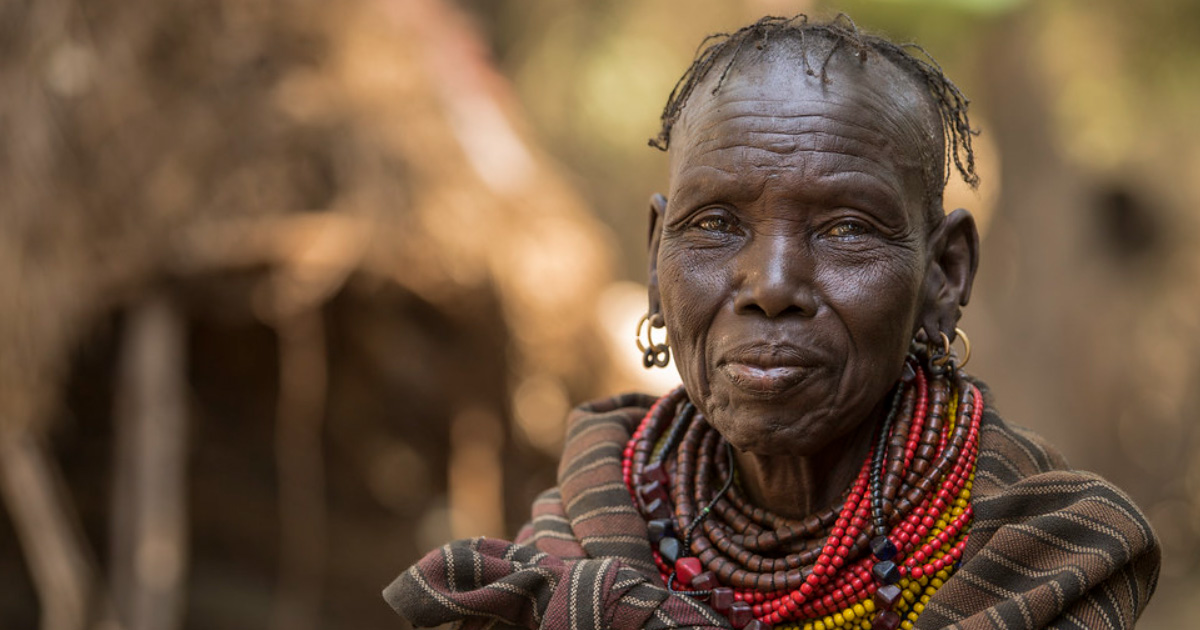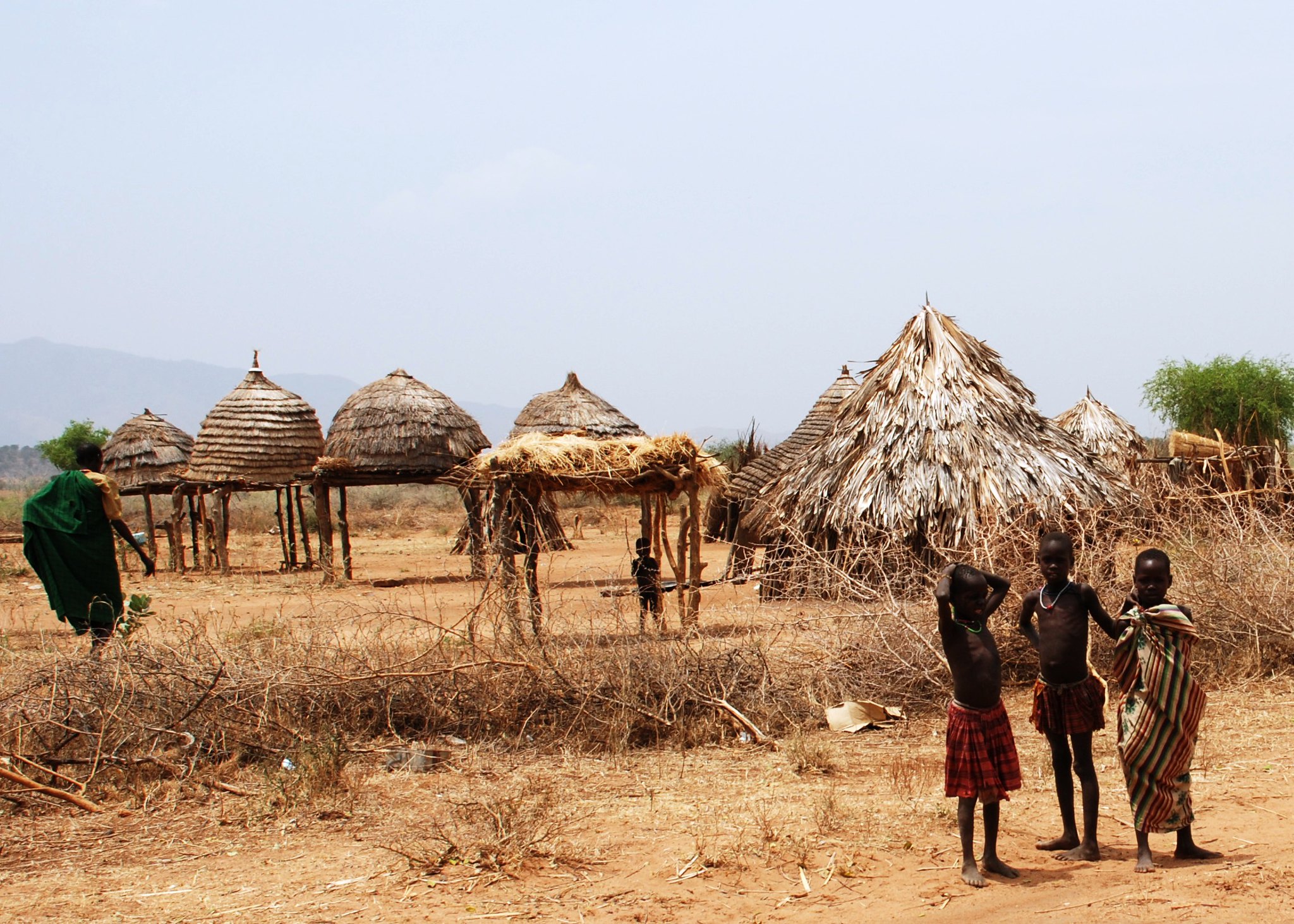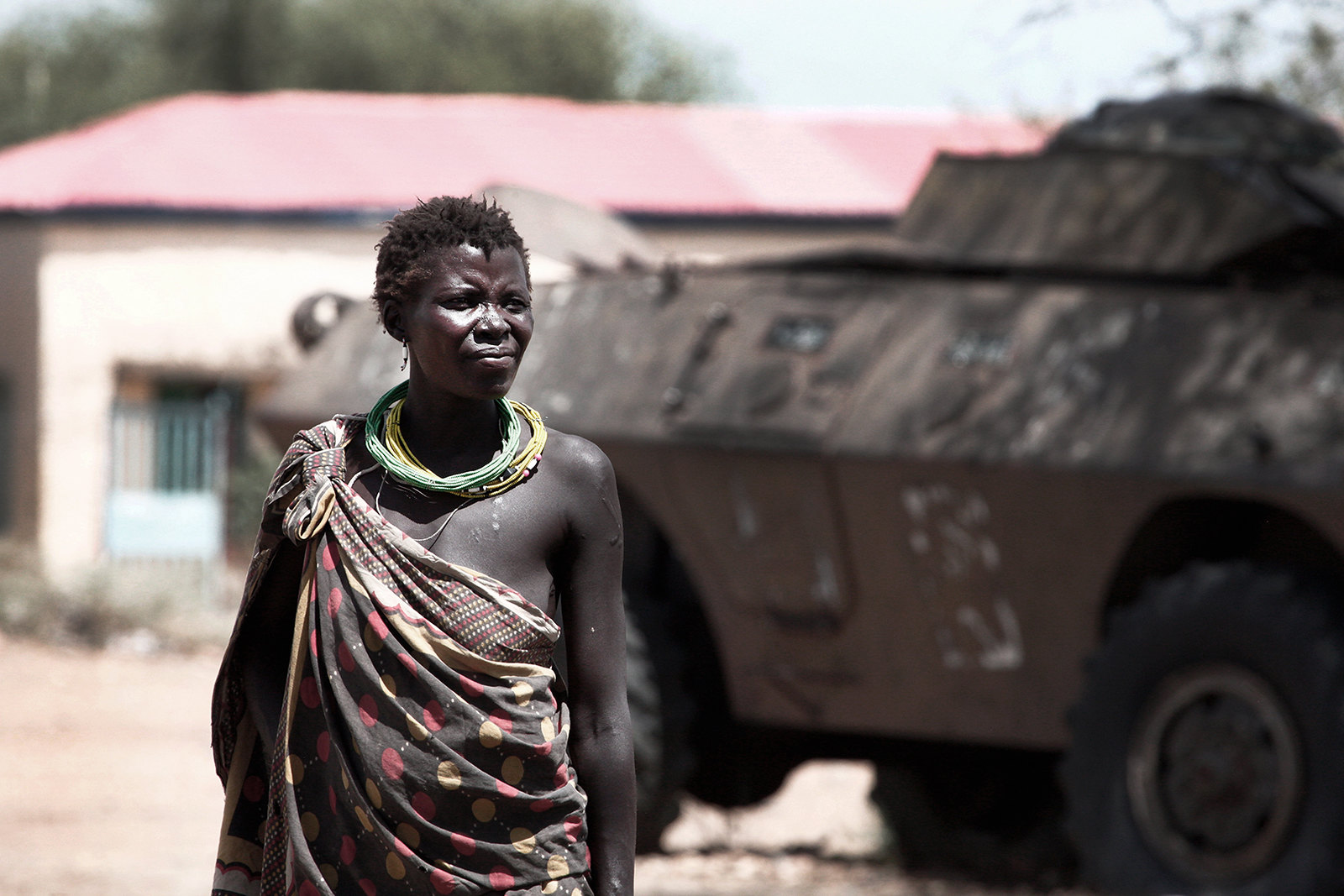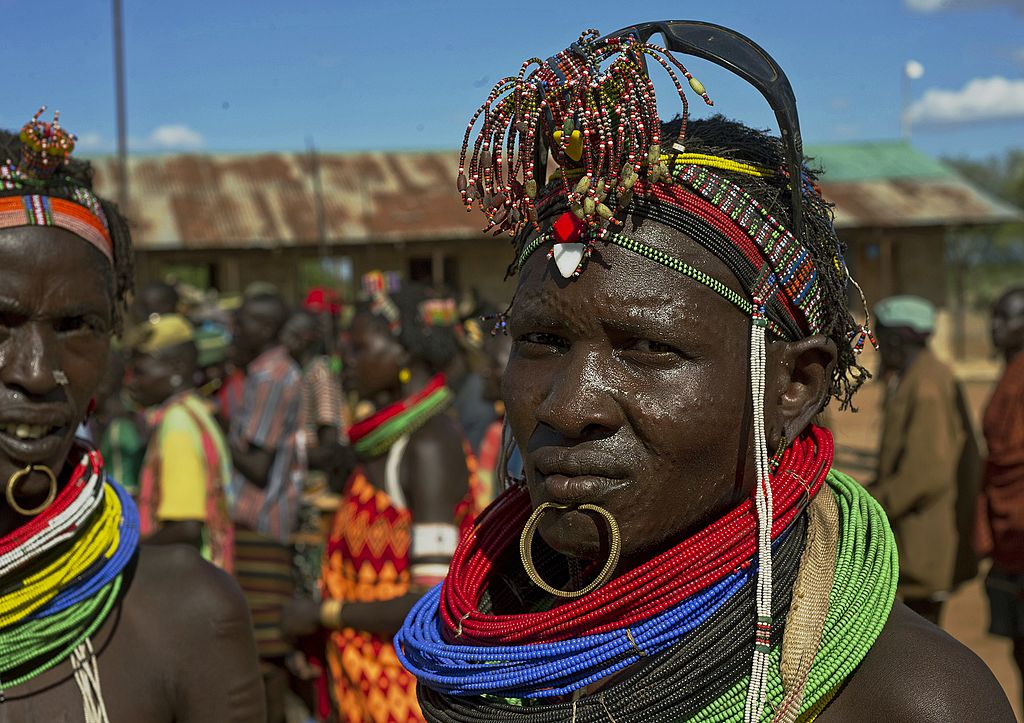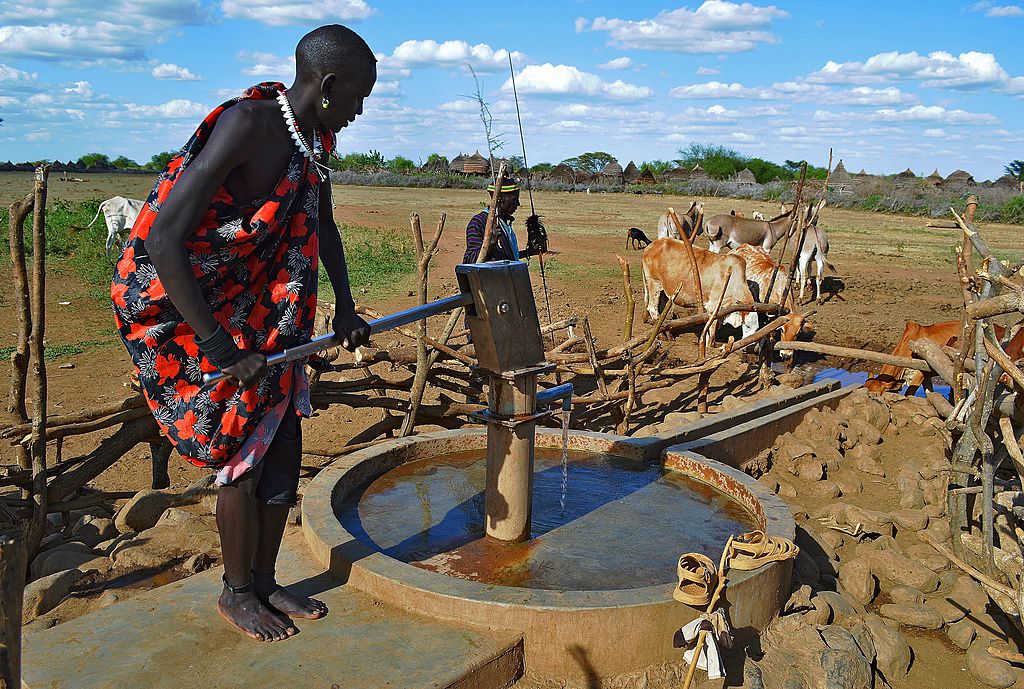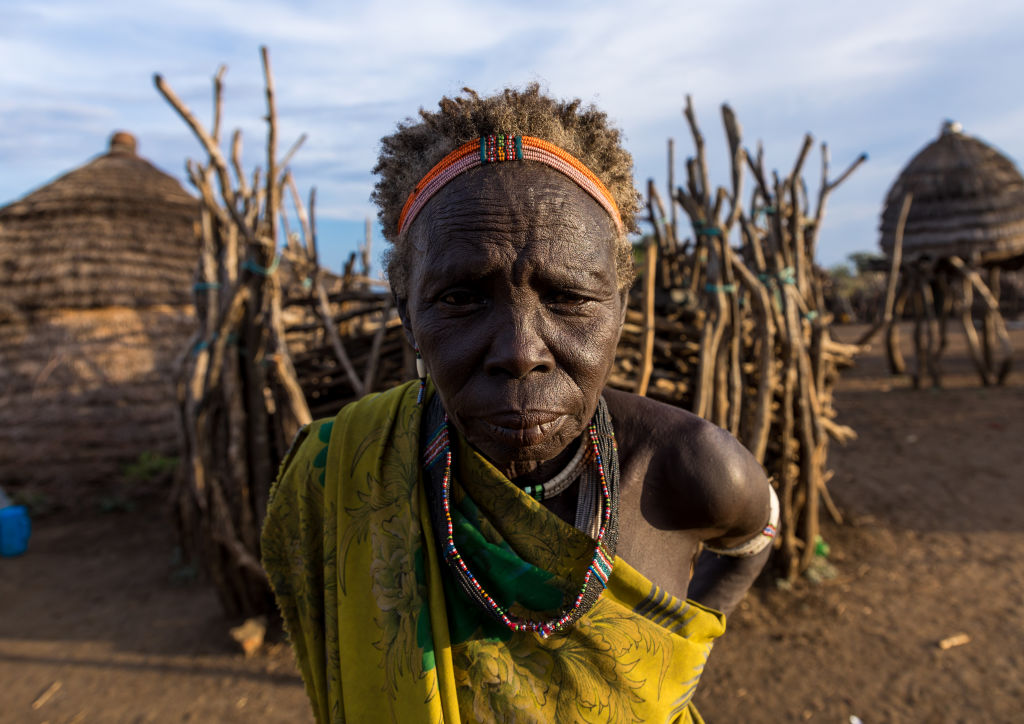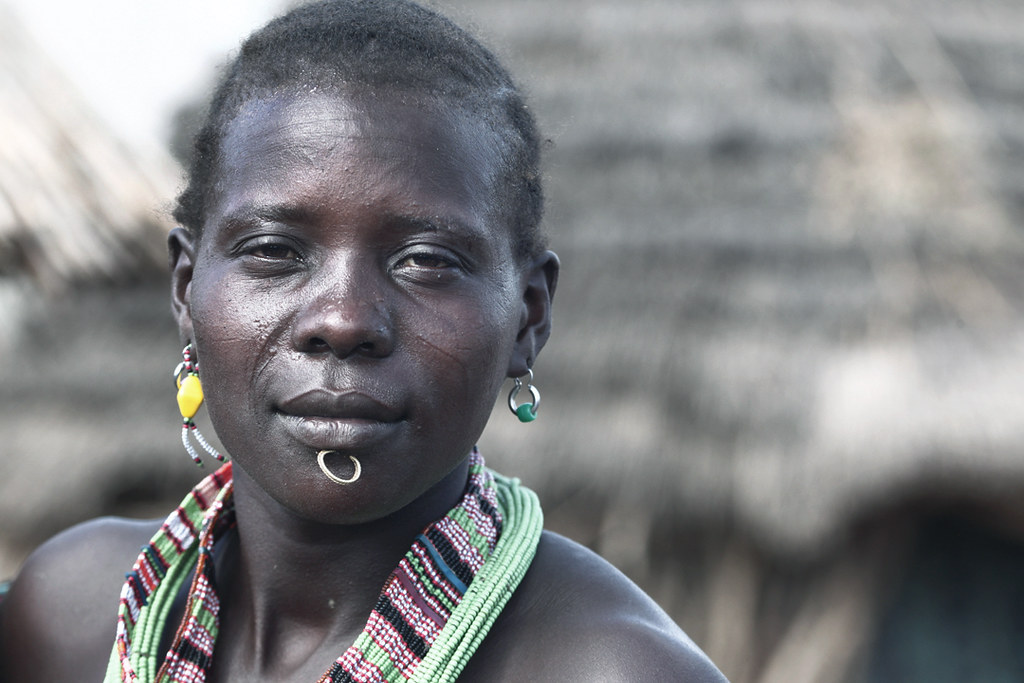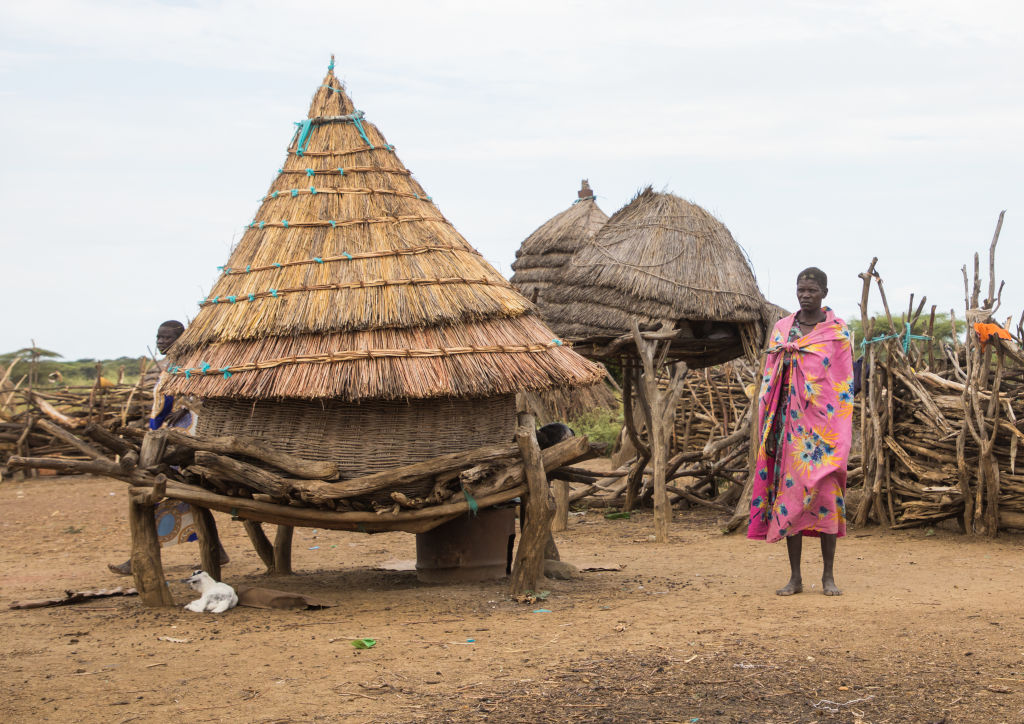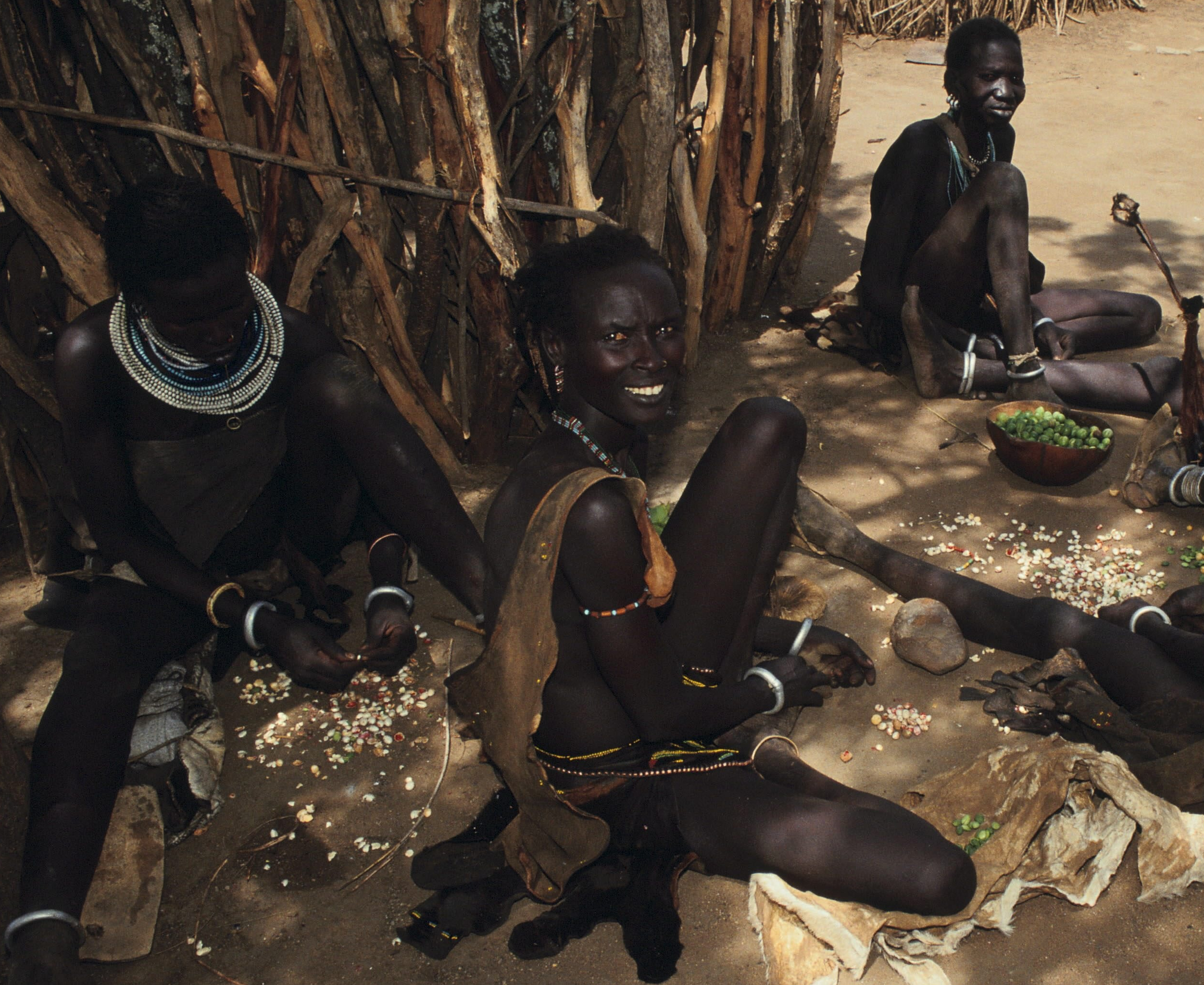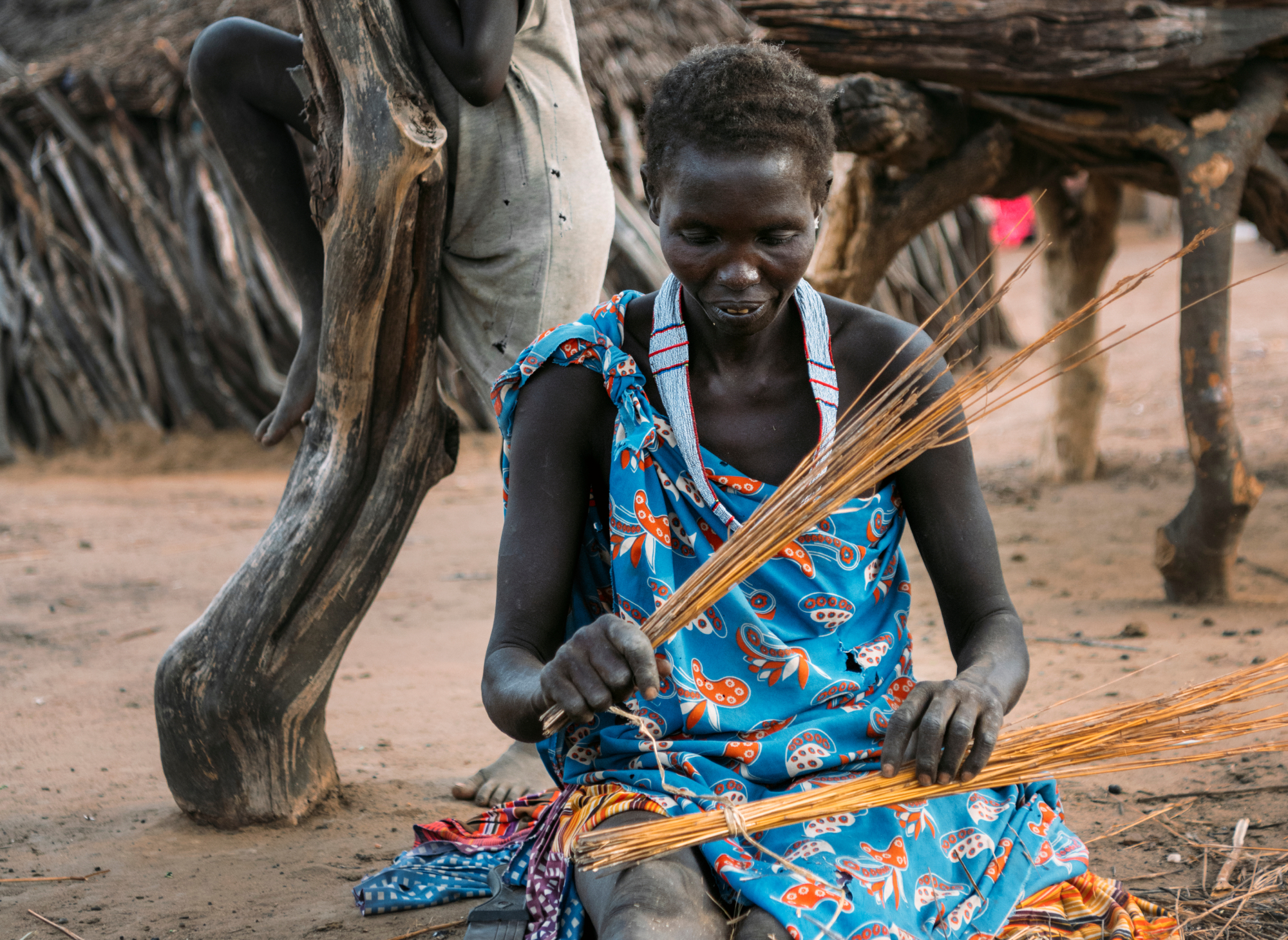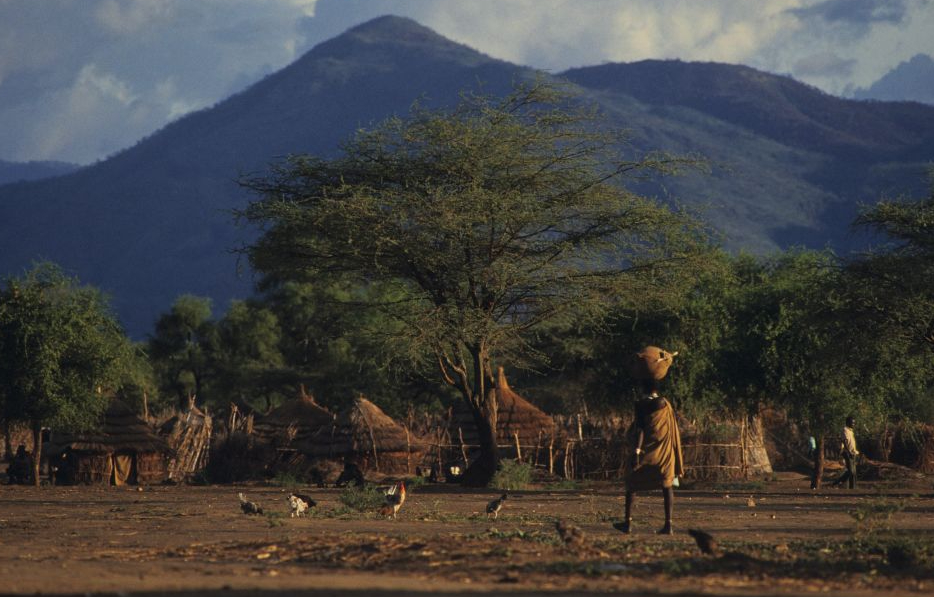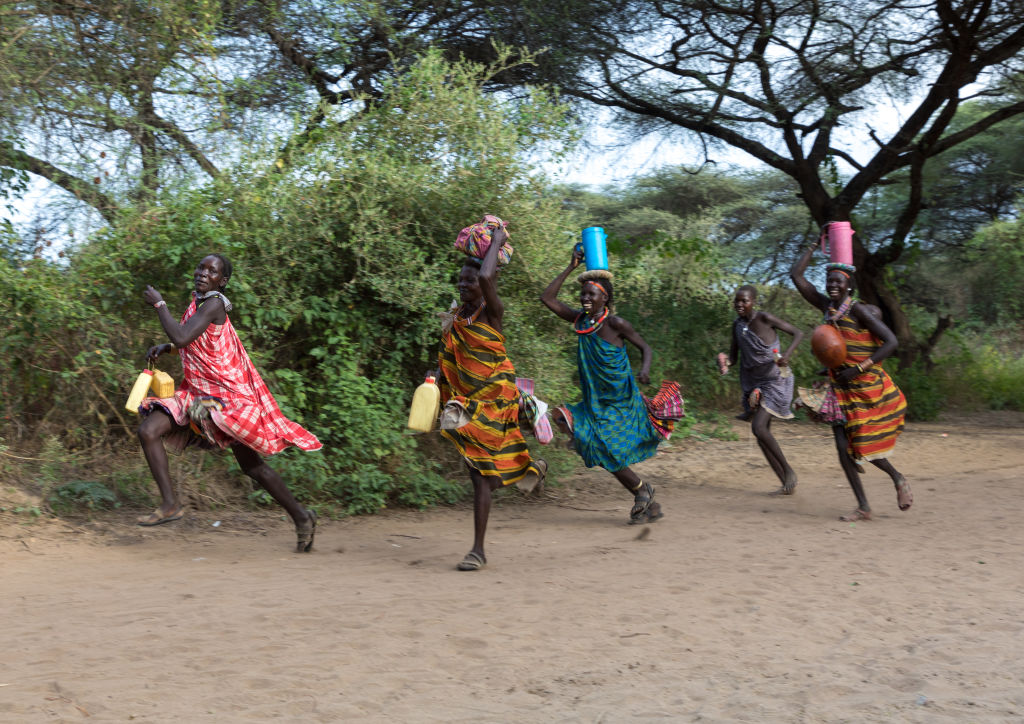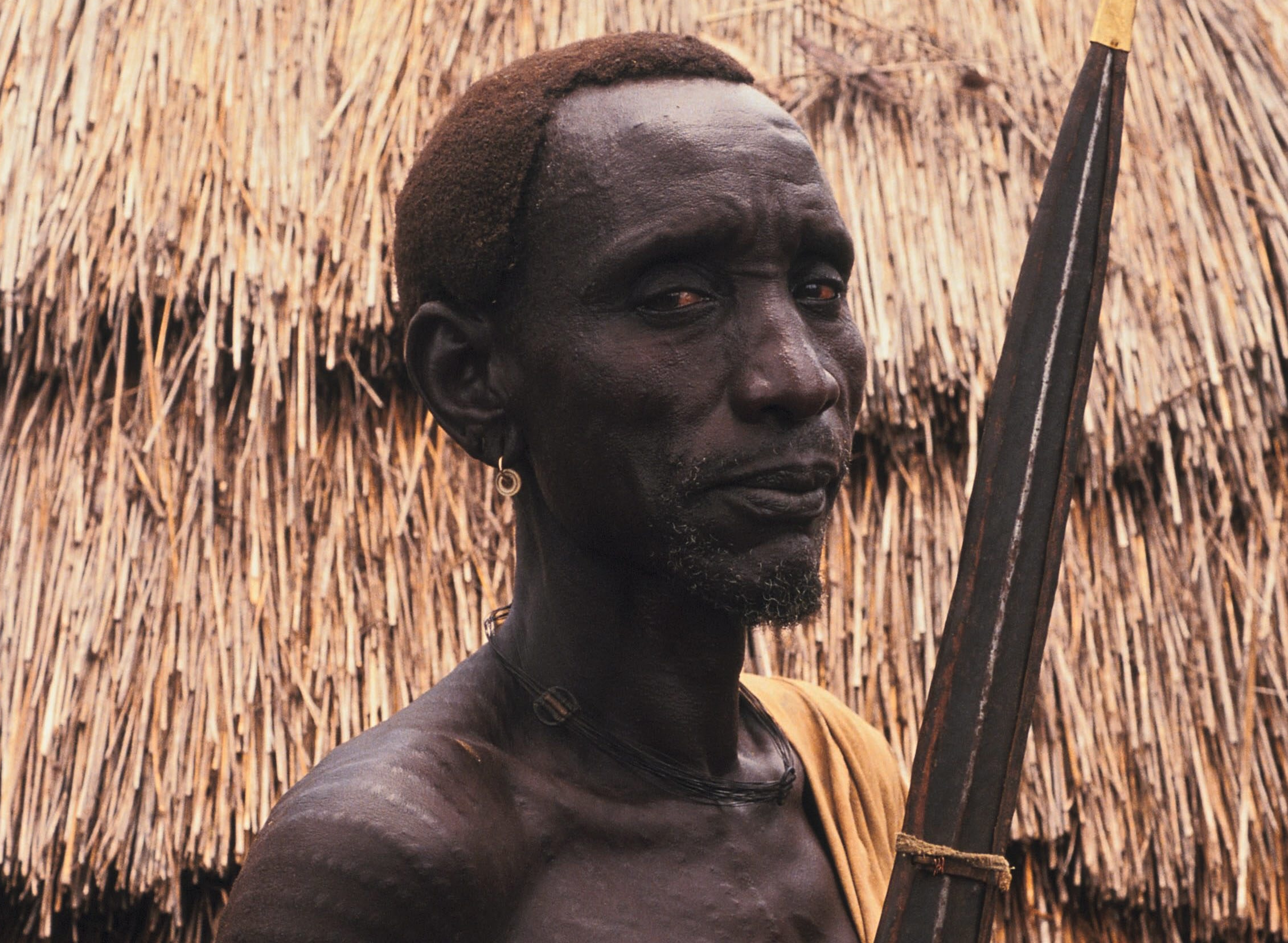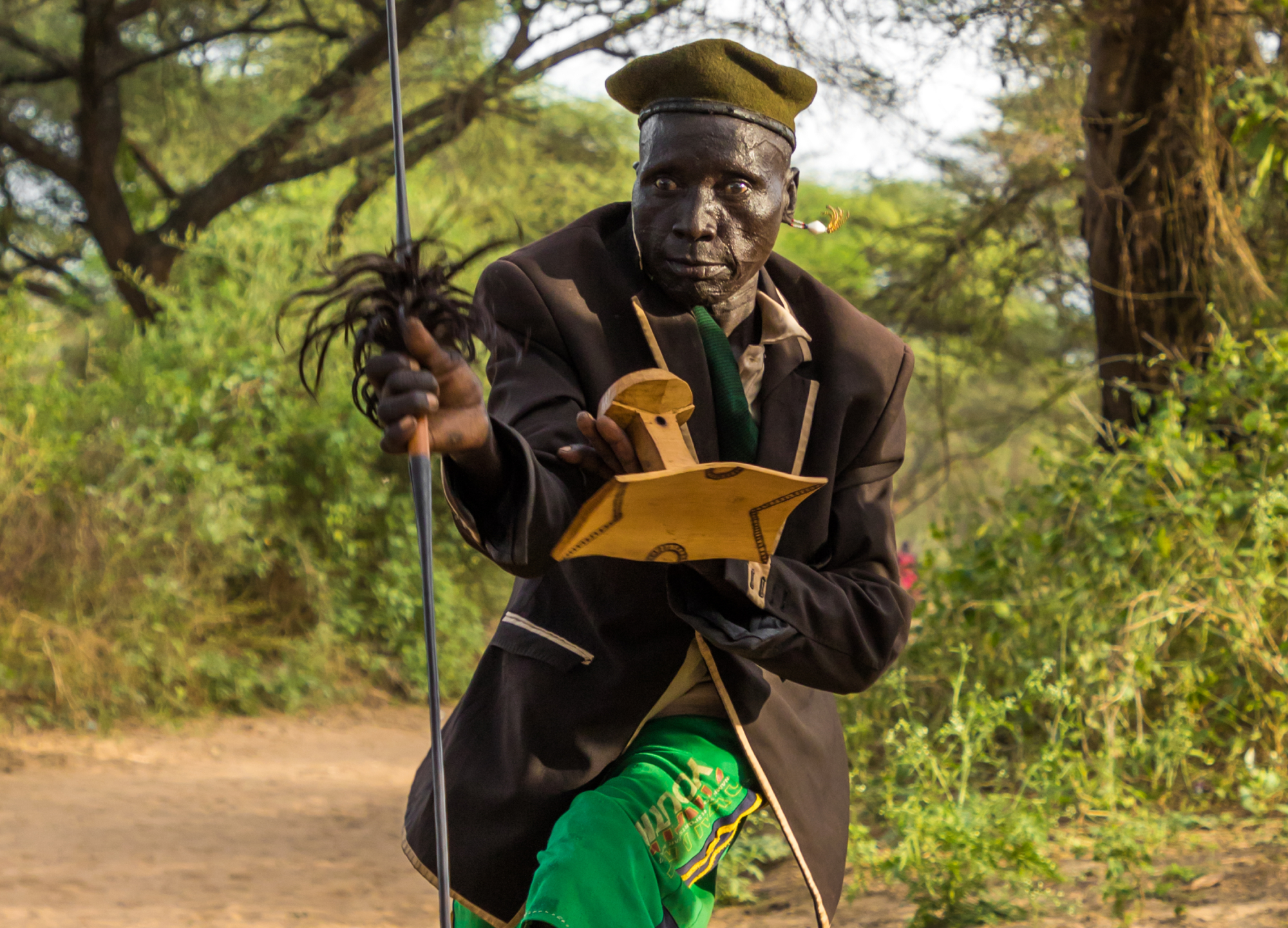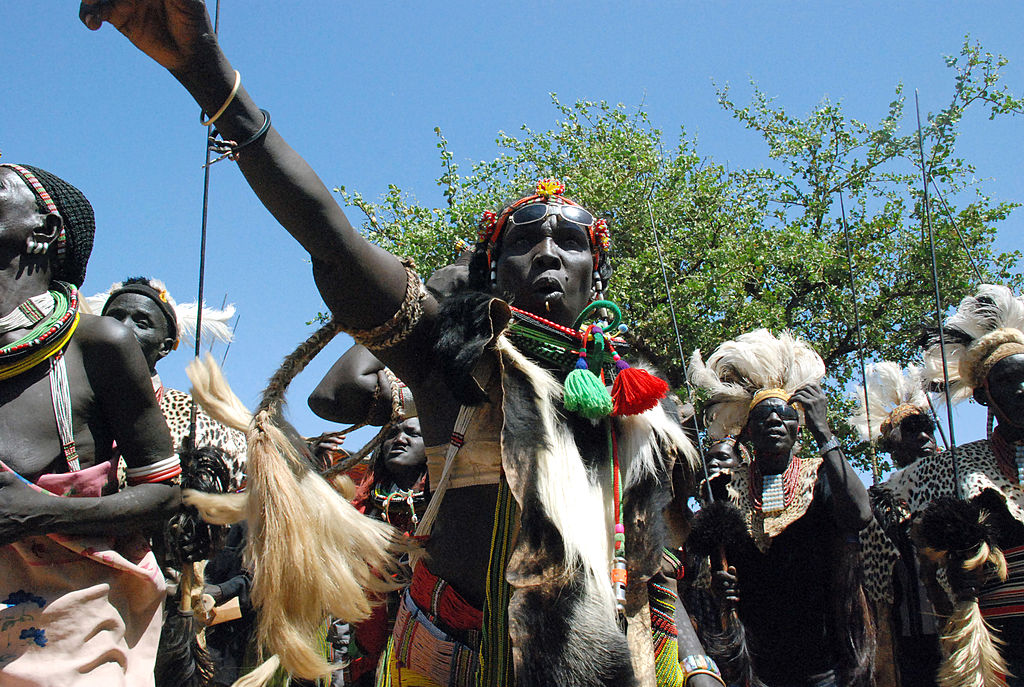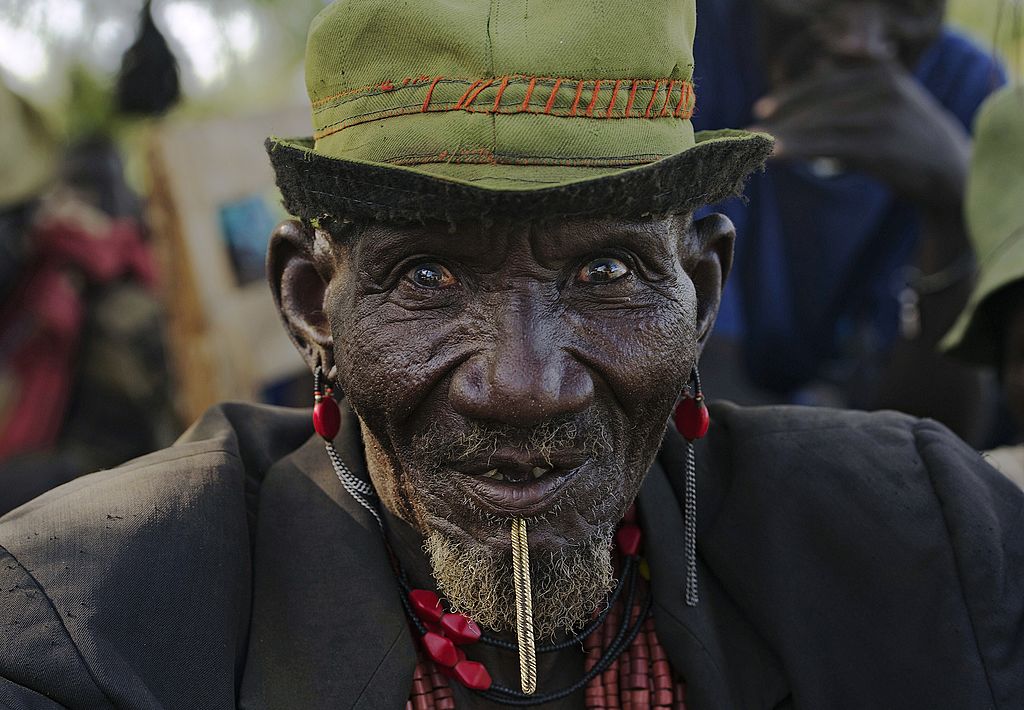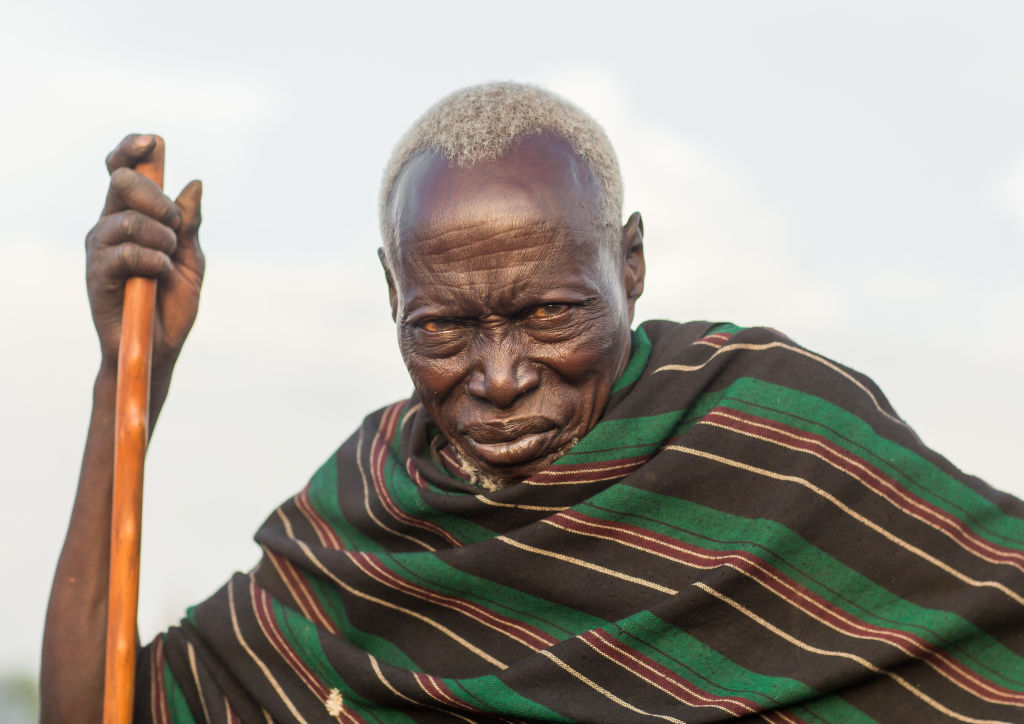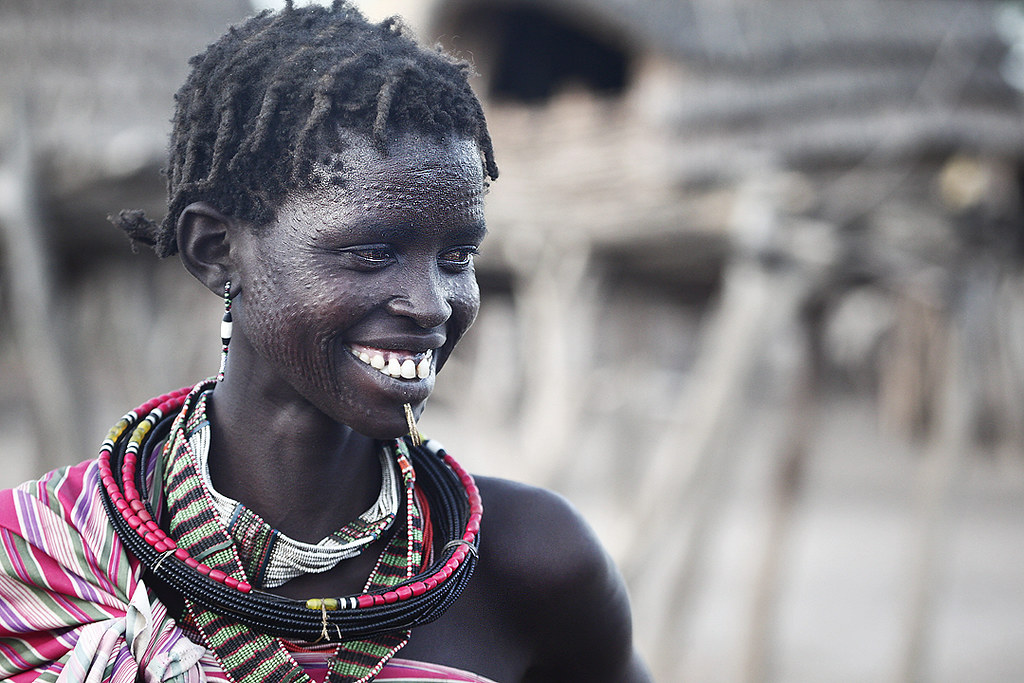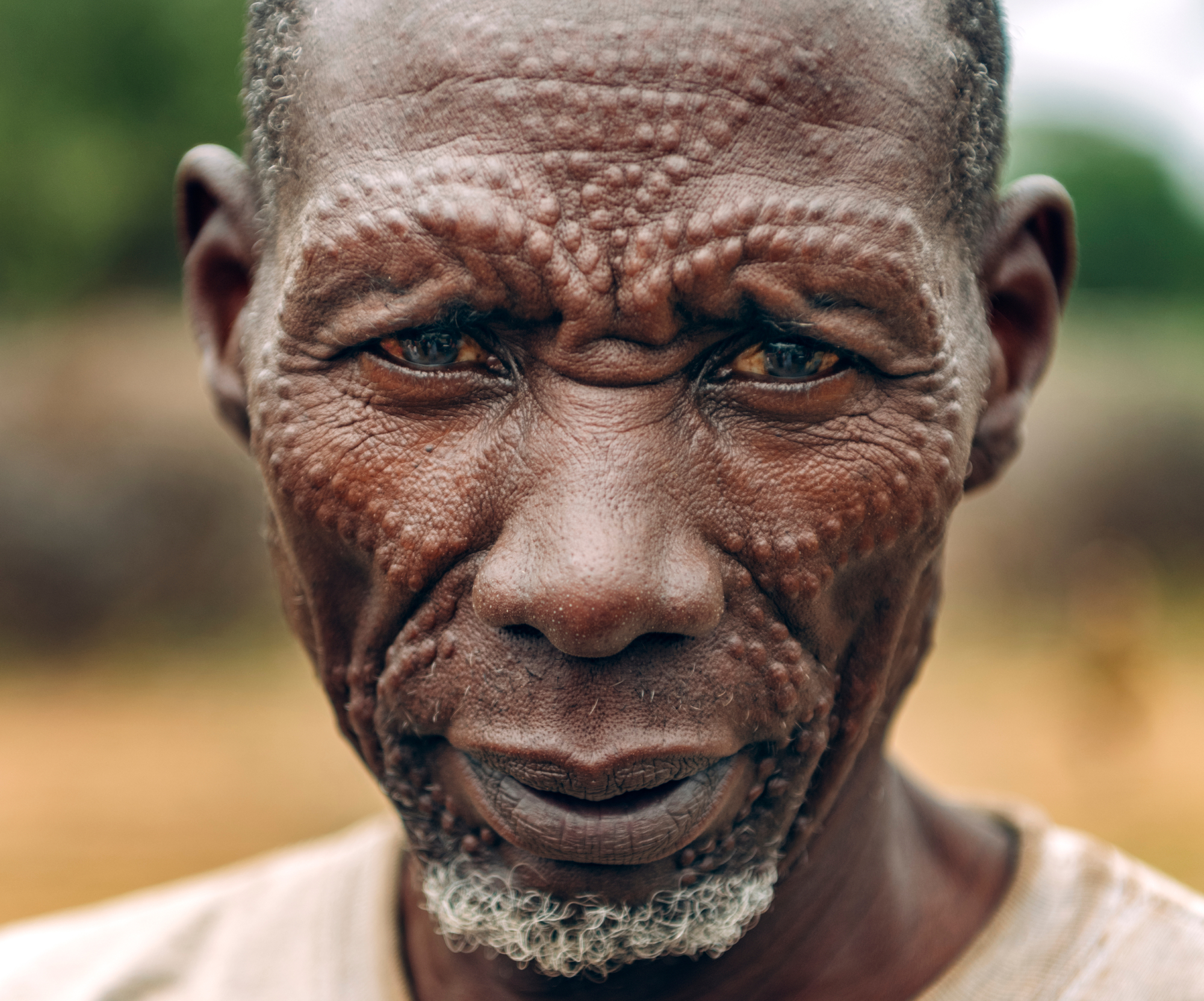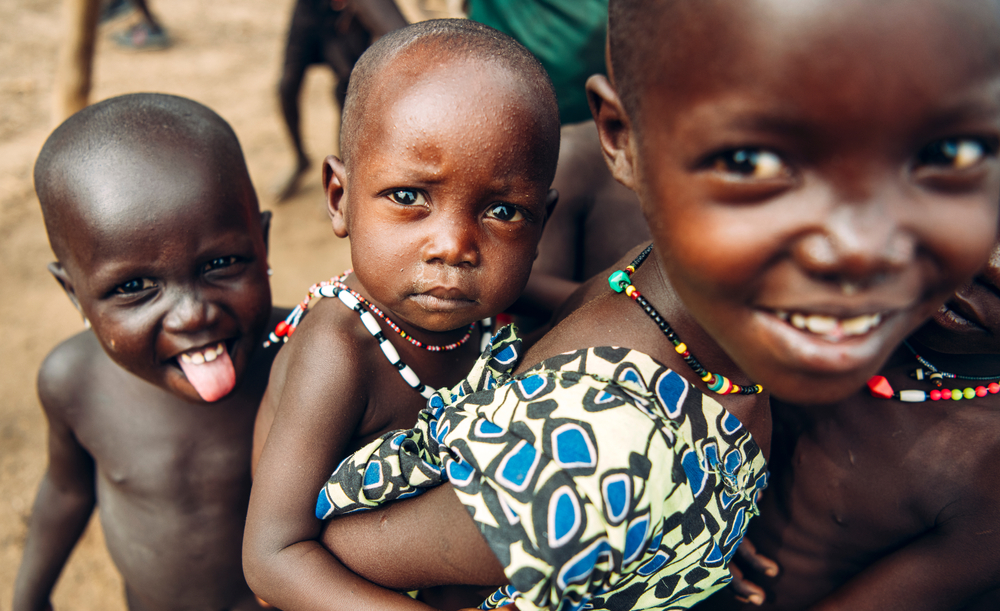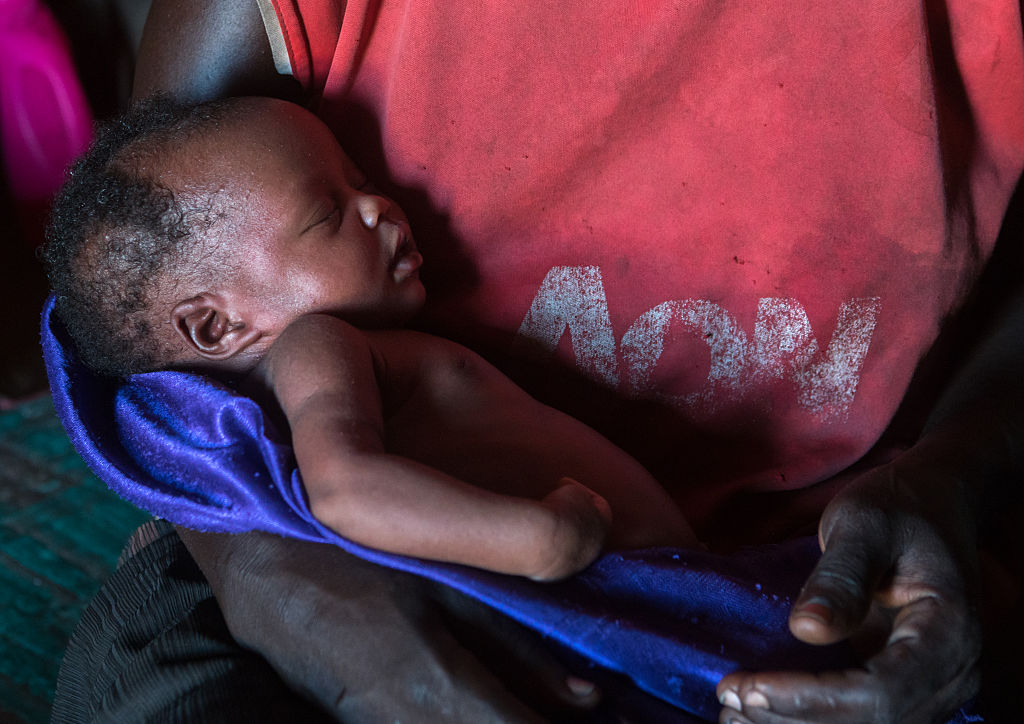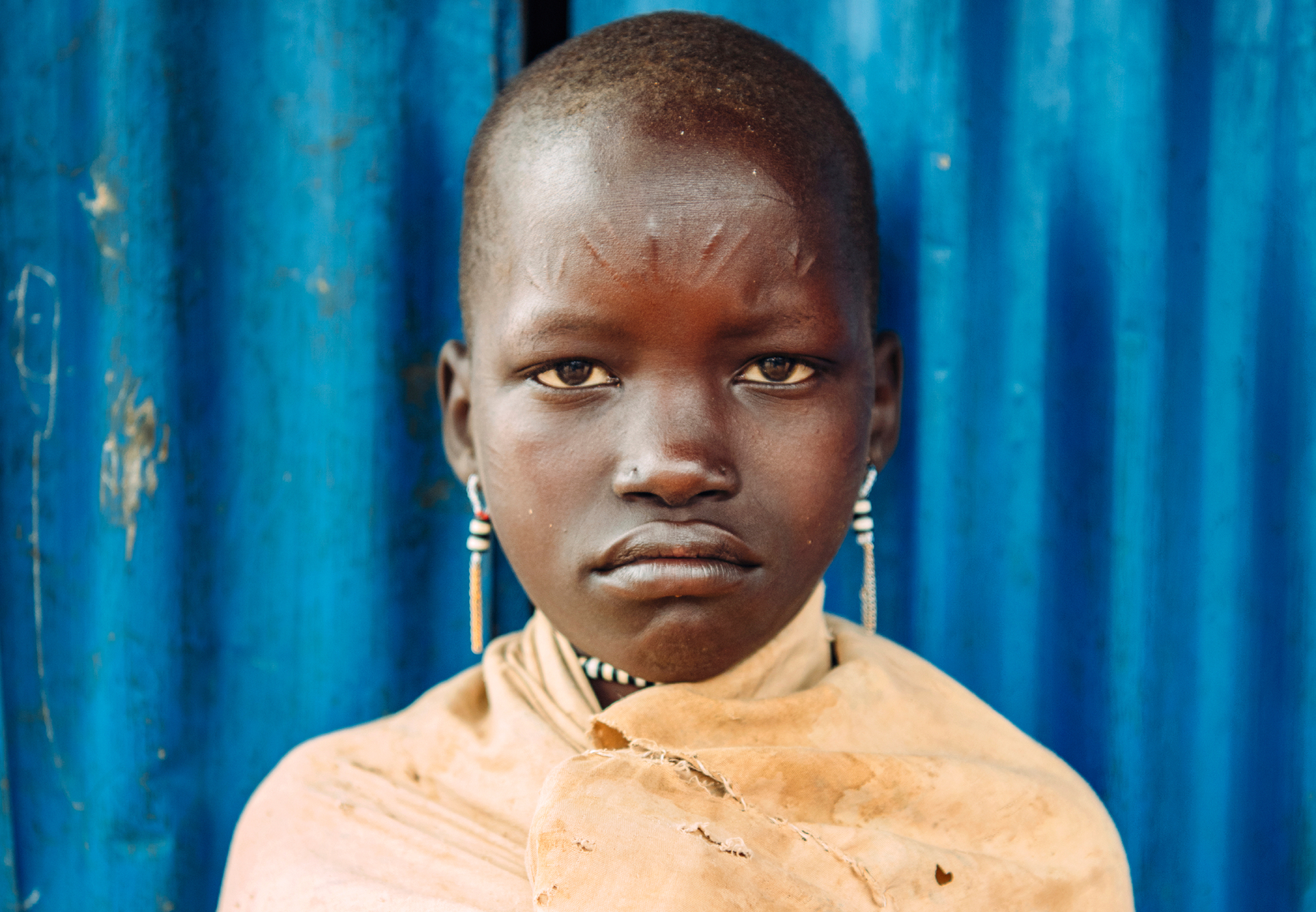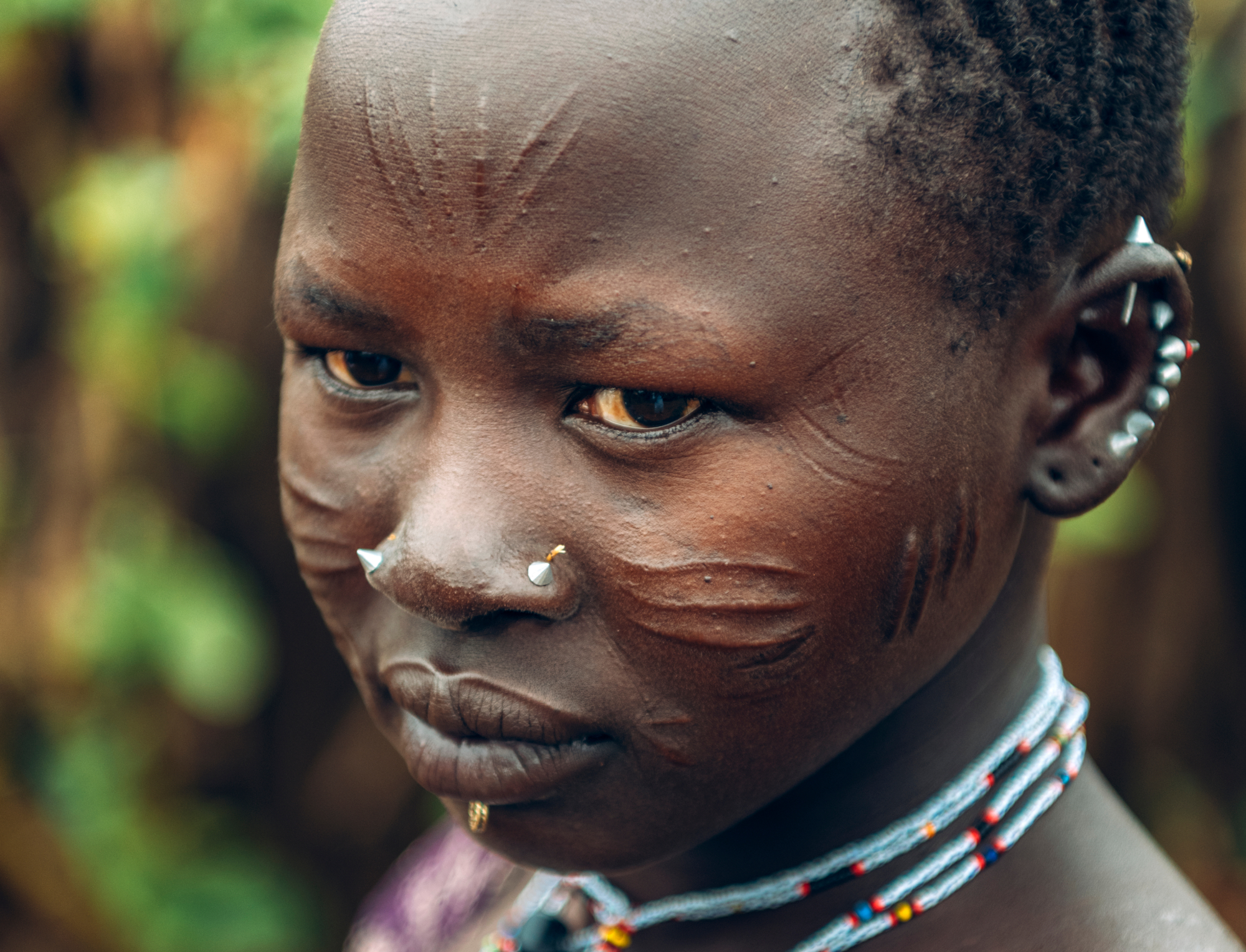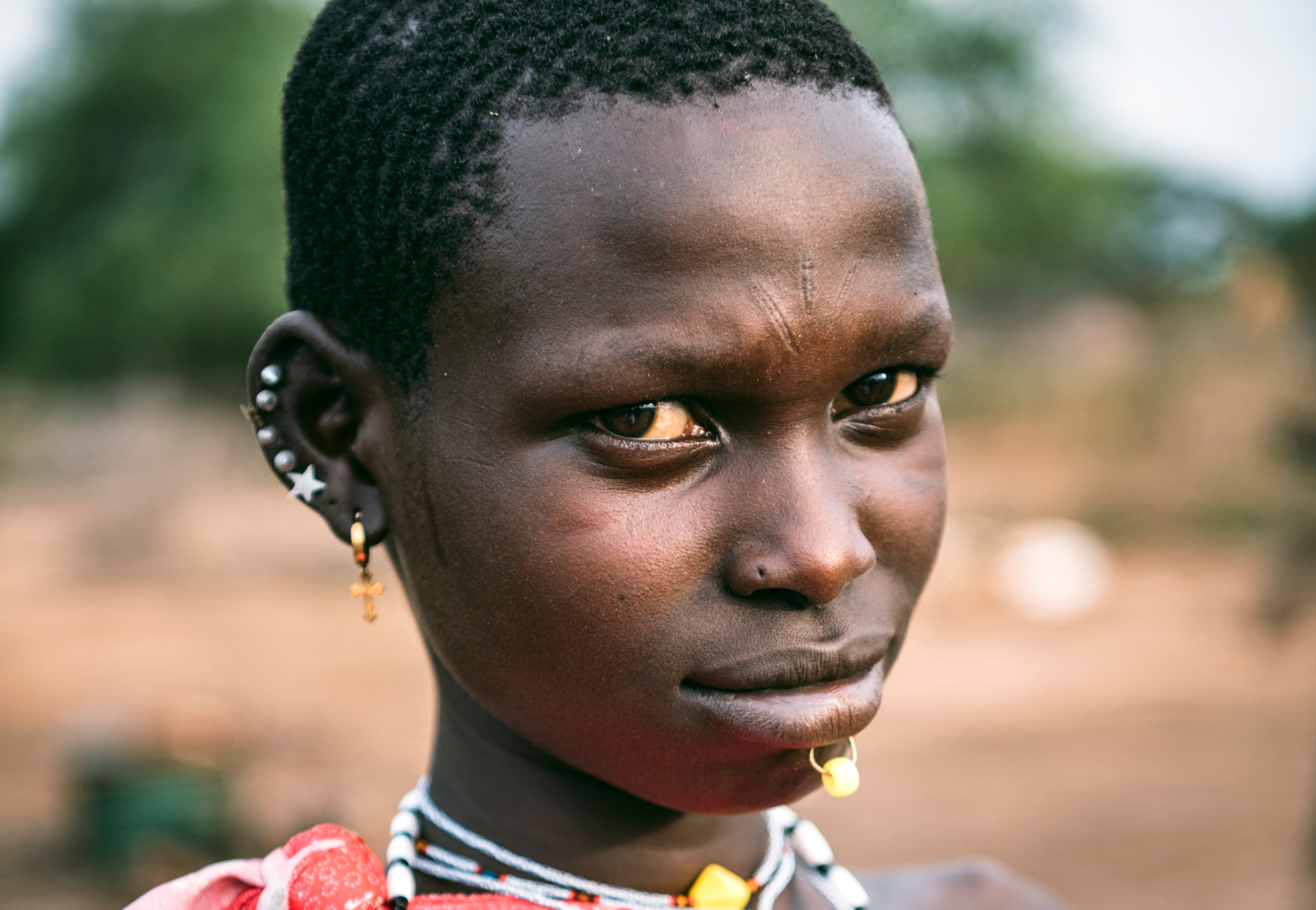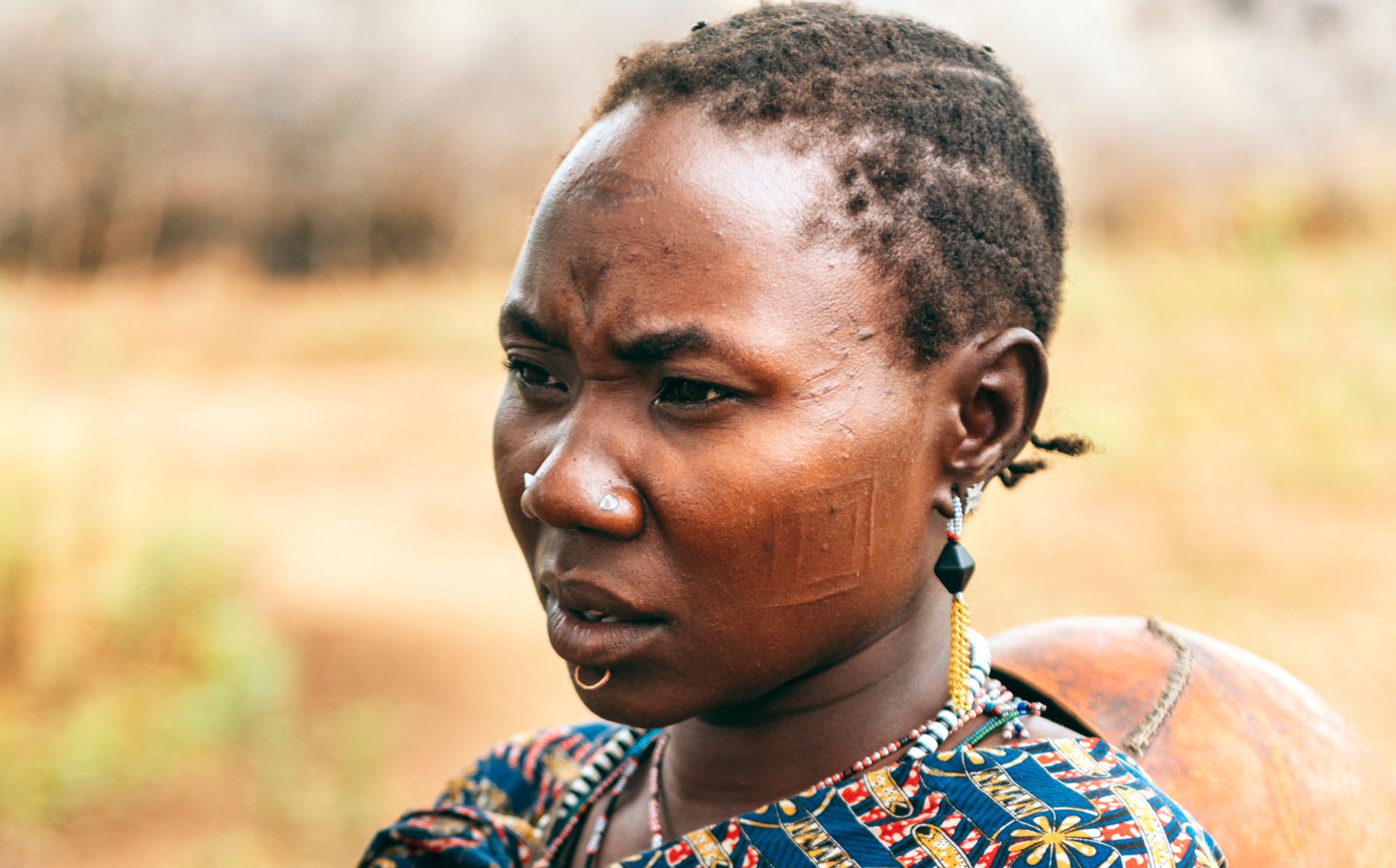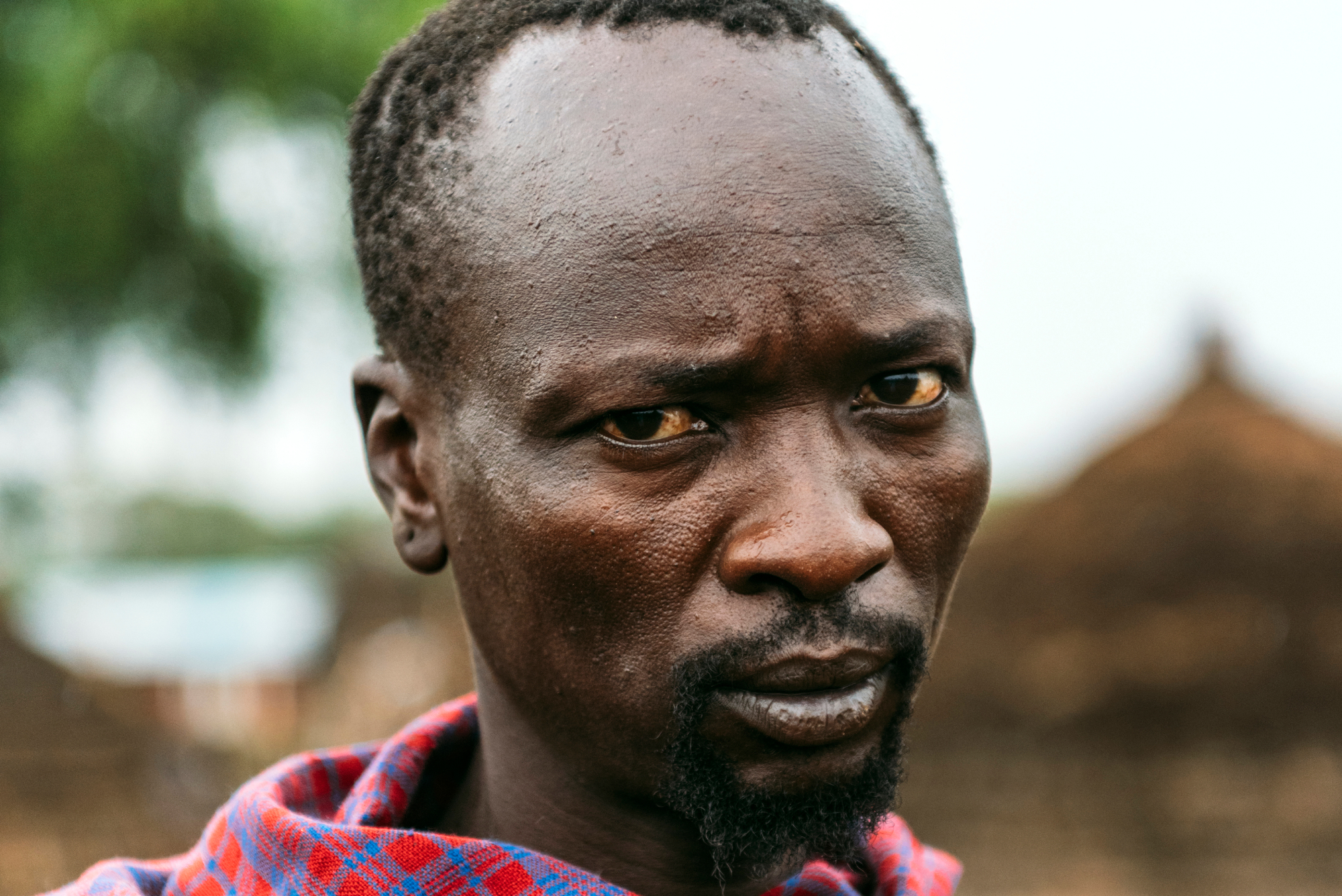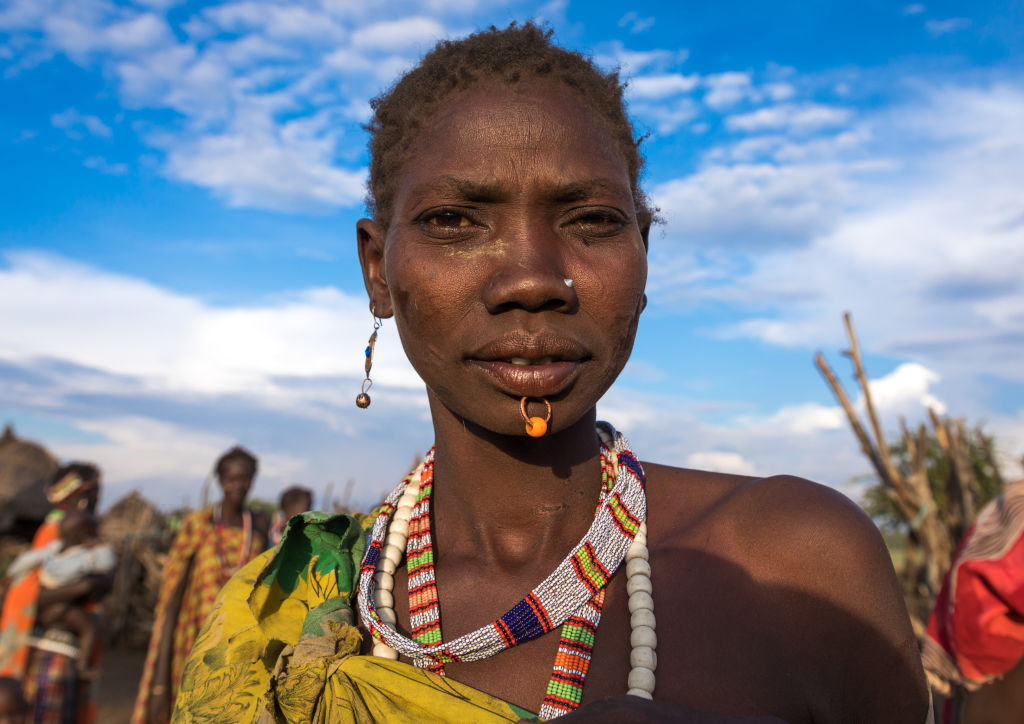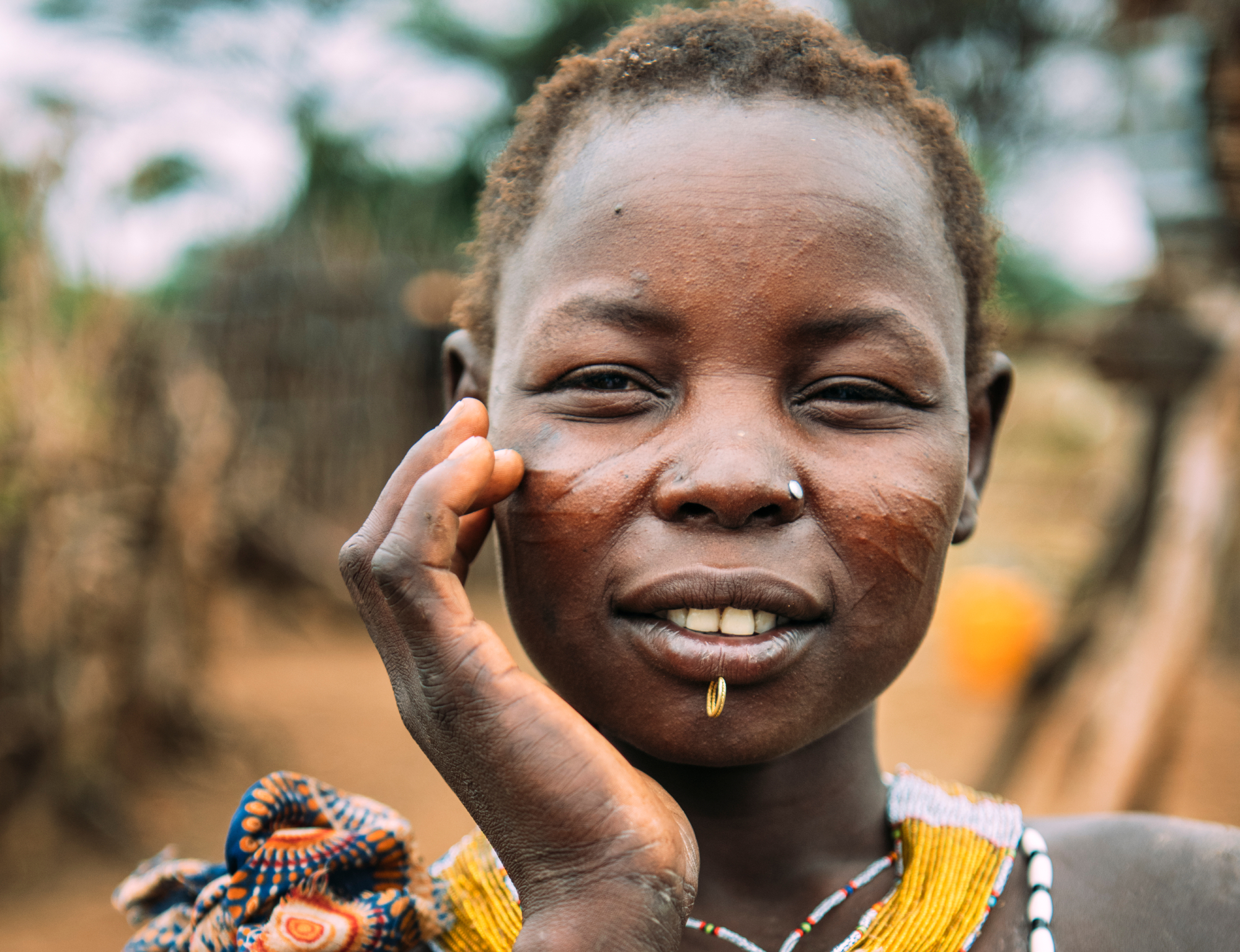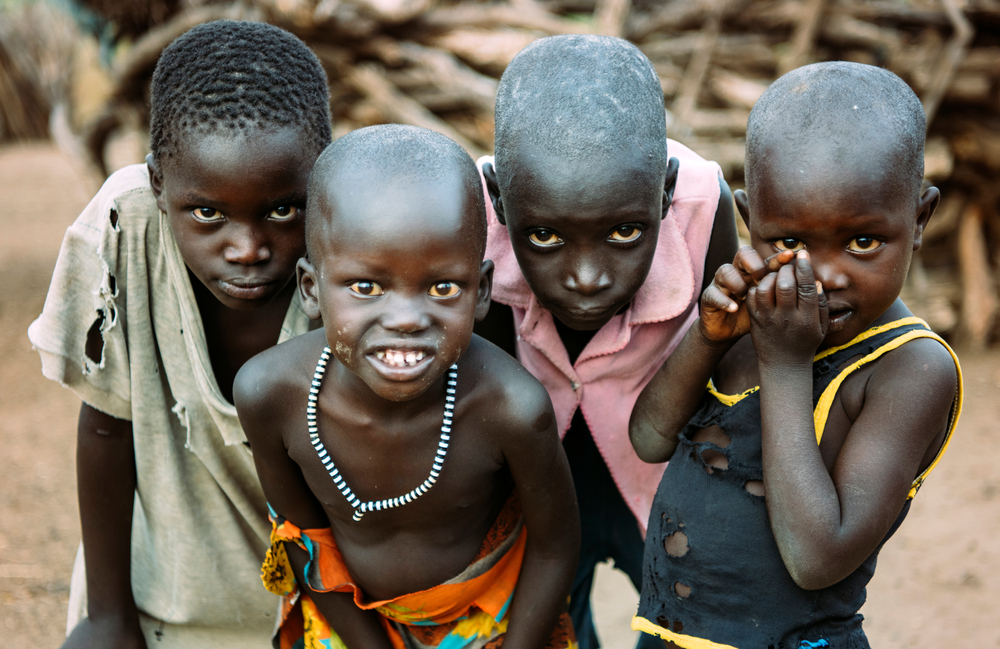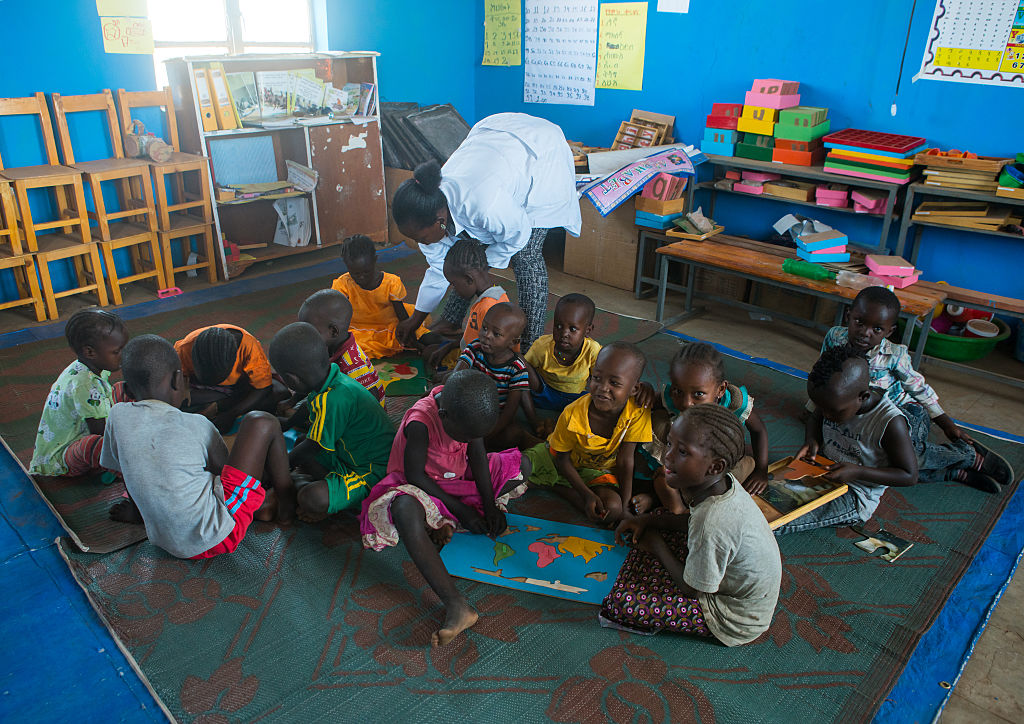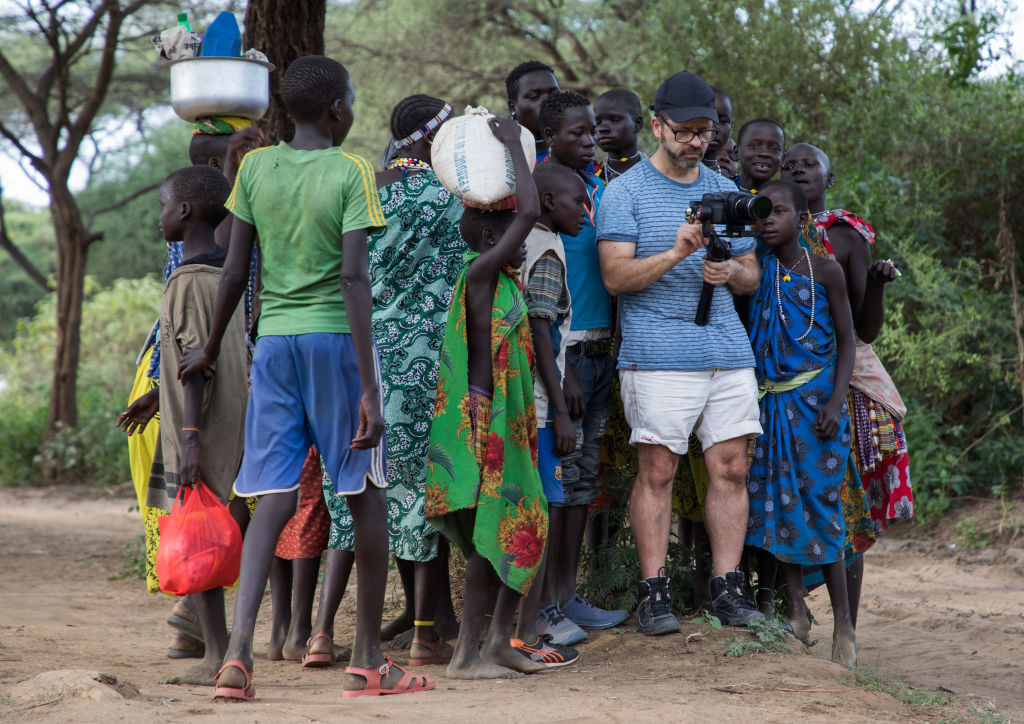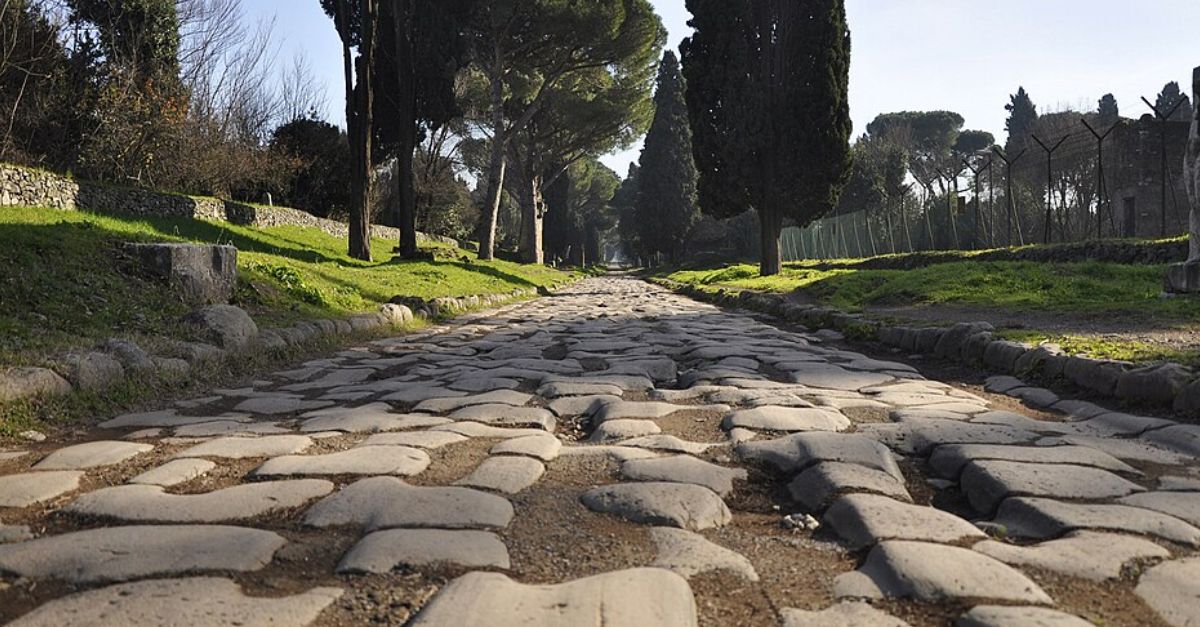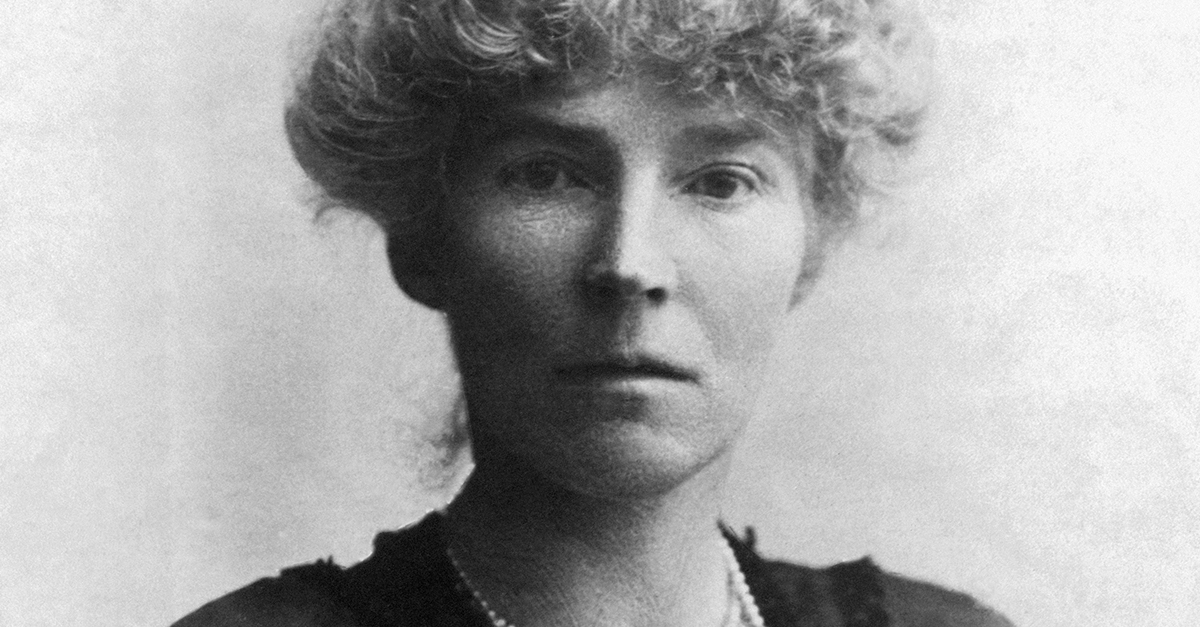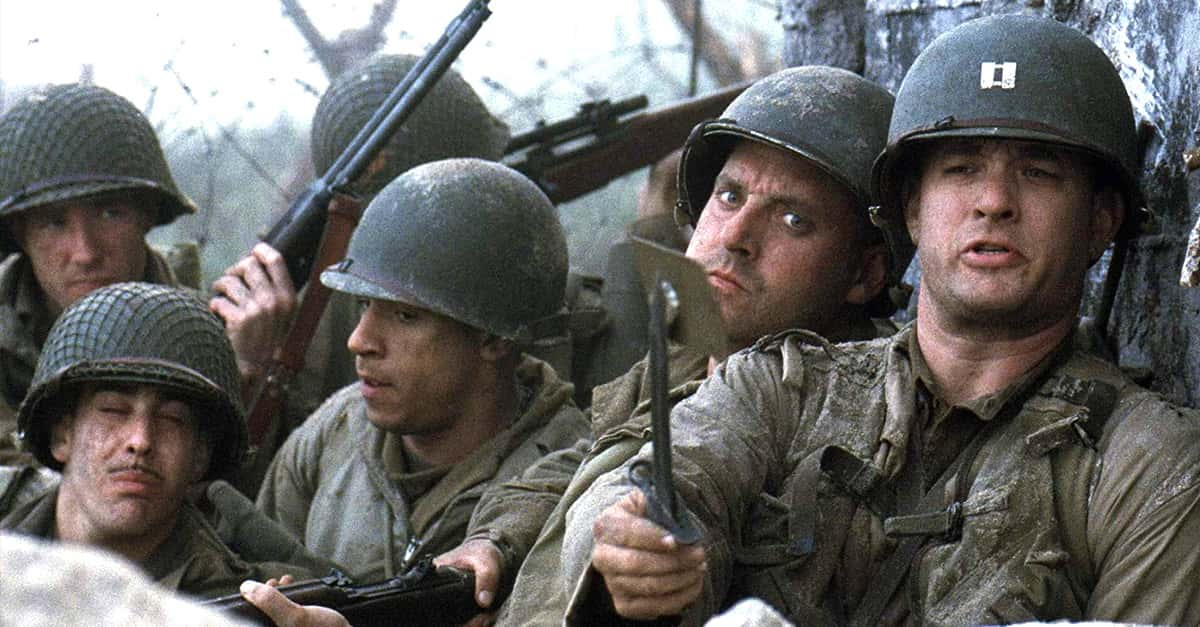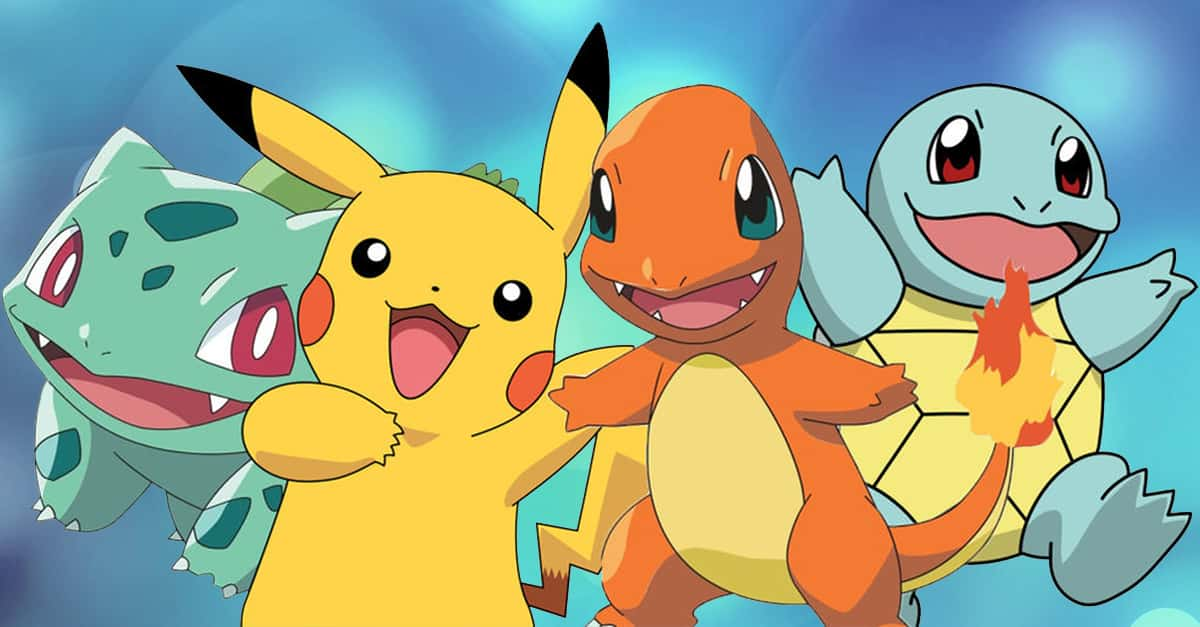The "Cattle Raiders" of South Sudan
The Toposa people are said to be one of the most interesting ethnic groups of South Sudan, still living a very primitive and traditional lifestyle today.
Not only are they traditional in the sense of living off the land and raiding their neighbors for cattle, they also still partake in some ancient practices that don’t exactly sit well with modern society—like body scarification and child marriage.
That’s not all, though. The Toposa tribe certainly live up to their reputation when it comes to being interesting.
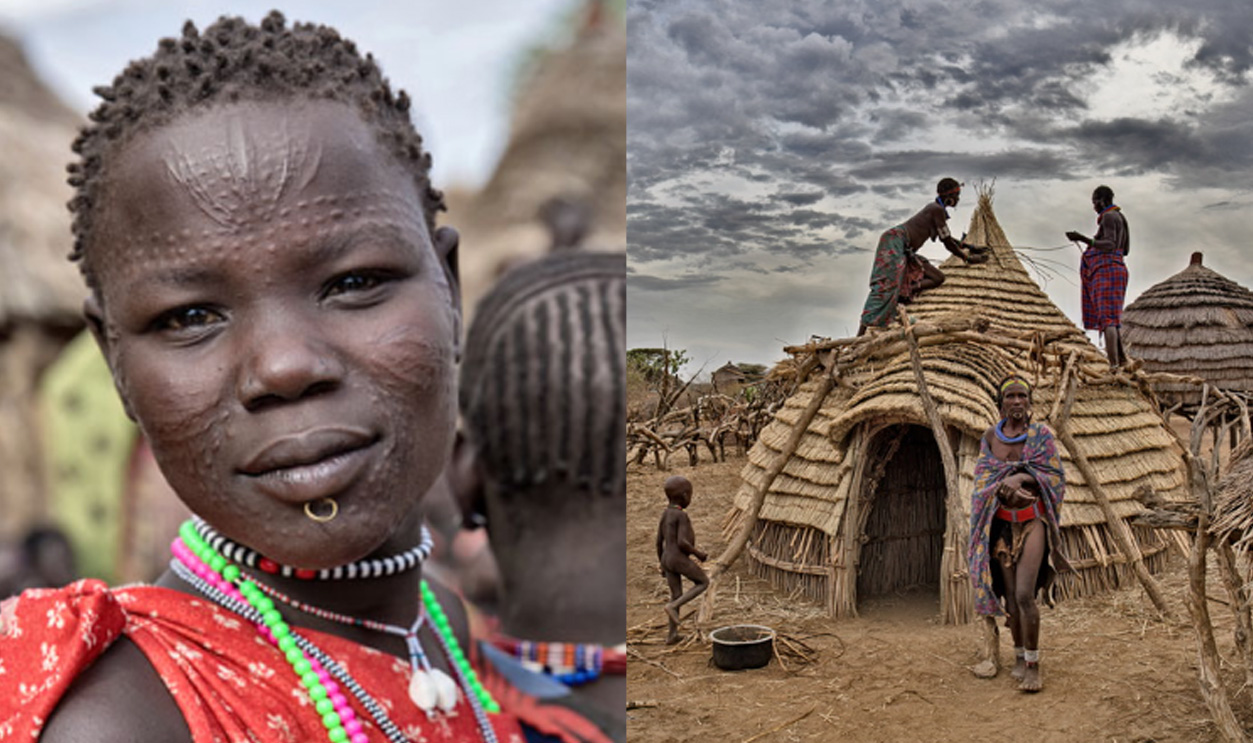
Where do they live?
The Toposa people live mainly in South Sudan, specifically the Greater Kapoeta region—as well as, Riwoto and Narus. There are also pockets of Toposa people in neighboring countries, Kenya, Uganda, and Ethiopia.
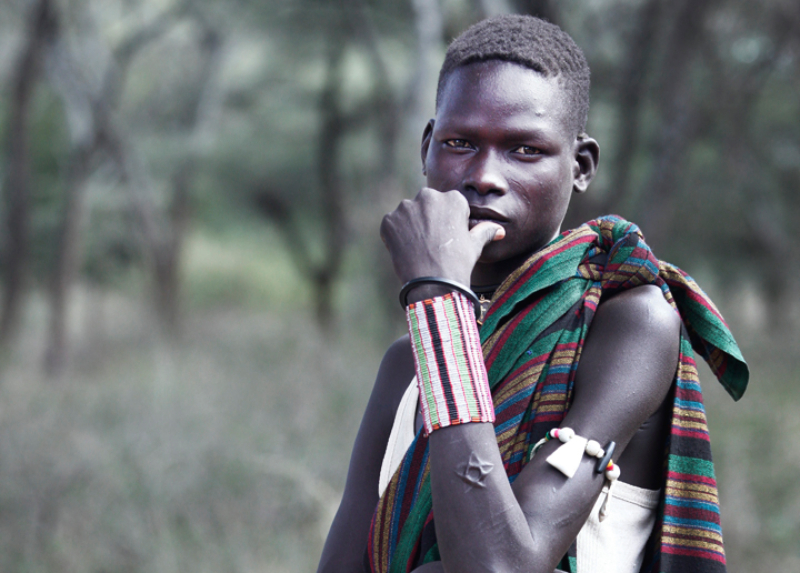 Steve Evans, CC BY 2.0, Wikimedia Commons
Steve Evans, CC BY 2.0, Wikimedia Commons
What is their homeland like?
Toposa land has a rugged topography with hills and ridges cut by shallow plains and seasonal streams. There is very little vegetation like shrubs and grass, and the ground is mostly dry dirt.
Water can be a struggle to find at times.
What is important to note about their location?
The Toposa people are considered an Unreachable People Group (UPG). The country they live in has been at war for two decades—until 2011 when things started to simmer down.
Because of this, hardly any missionaries could enter the community, and therefore they have become unreachable.
What language do they speak?
They speak the Toposa language, which is a Nilotic language. Other names for the Toposa language are: Akara, Kare, Kumi, Taposa and Topotha.
What is their lifestyle?
The Toposa people are semi-nomadic pastoralists—meaning they keep animals such as cattle and sheep, and they move around periodically, usually to find new water and food resources, and only when necessary.
What are they known for?
The Toposa are well known warriors and cattle thieves. They’re often described as “fierce” and “unafraid.” It is said that they are skilled at spying on their enemies in order to anticipate their next move.
Aside from their warfare tactics, the tribe is also known for their exceptional beadwork.
 Rafiki Theatre [Uganda], CC BY-SA 4.0, Wikimedia Commons
Rafiki Theatre [Uganda], CC BY-SA 4.0, Wikimedia Commons
What do they wear?
Toposa people traditionally wore skirts made from animal skins. Sometimes they dyed the skins using foliage they come across. They adorned them with handmade beads.
Today, they have acquired materials through trade and wear handmade skirts and coverings, with an exceptional amount of beading.
What do they accessorize with?
The Toposa people are skilled with handicrafts, specifically beaded crafts.
They accessorize with beaded armbands, headbands, necklaces and belts. And many women wear earrings, and a ring below their lower lip that vary in size preference.
What are their villages like?
A Toposa village is comprised of small huts built closely together in small extended family clusters. Some family huts are linked or protected by thorned fences.
Villages also have food storage huts, bachelor huts, huts for young girls, and small subsistence farming fields.
What are their houses made from?
The Toposa houses are small huts called tukel. They take a beehive shape and are built using grass or palm leaves, and mud. The thatched roof typically reaches close to the ground, and the highest part inside is used for storage.
Food storage huts are built on stilts to protect the goods from animals.
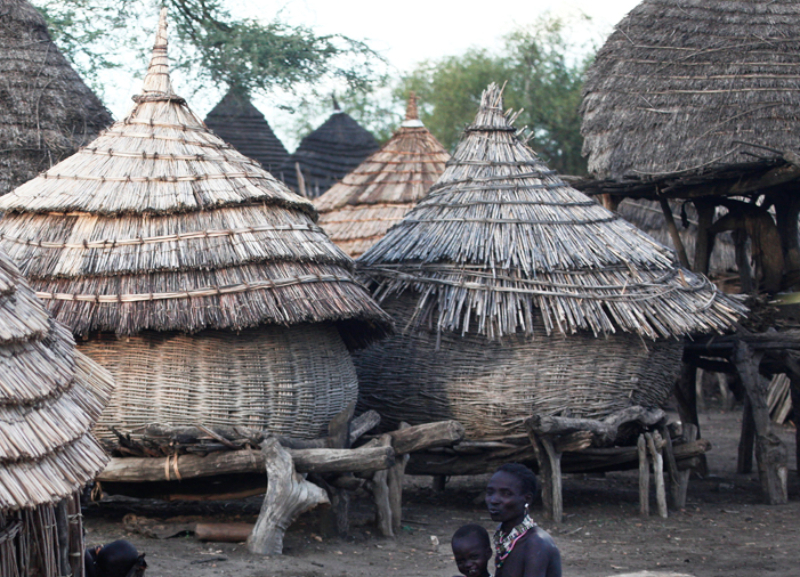 Steve Evans, CC BY 2.0, Wikimedia Commons
Steve Evans, CC BY 2.0, Wikimedia Commons
What do they eat?
The Toposa people herd cattle, goats, and sheep, in which they use for food, milk, and leather.
They engage in some agriculture in the river valleys, with the main crop being sorghum, grown on fertile clay soils. They also do some small-scale farming of maize and millet.
How is their food at risk?
Weather conditions can often cause severe shortages or large surpluses—which is what determines if and when they move.
The usually dry climate often experiences droughts, which can make farming and agriculture extremely challenging.
What is their economy like?
The Toposa economy revolves around herding livestock, which can include: cattle, camels, donkeys, goats and sheep.
They also pan for gold and other precious minerals in the rivers. In recent decades, trade has become an integral part of their way of life.
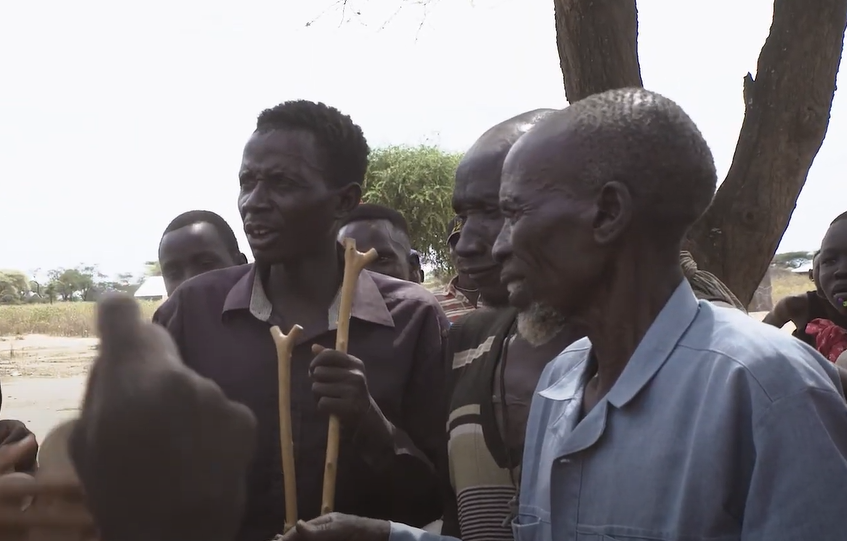 Kara-Tunga, Ateker Documentary
Kara-Tunga, Ateker Documentary
What do they use as income?
The Toposa community, along with their neighboring tribes, use cattle as the main form of currency. Other animals may be worth a bit too, but cattle is what everyone wants.
The more cattle a Toposa man has, the wealthier he is. With cattle, he can trade for many things—modern materials, food, equipment, and even young wives.
What else do they trade?
Back in the late 19th century, Toposa people became involved in the ivory trade. Today, they trade livestock, handmade goods (including clothing, beads, and more), and agricultural goods with neighboring tribes.
They also have been able to acquire a few more modern goods, like clothing and material, pots and pans—and something else that has now become a status symbol in the Toposa community.
How do they measure status and wealth?
Toposa people measure status and wealth by the possession of two things: cattle, and arms. If a Toposa man has both cattle and a loaded piece, he is considered wealthy.
The importance of owning a modern weapon is largely due to the ongoing conflict among neighboring tribes in the community.
Traditionally though, their weapons were handmade.
What do they arm themselves with in battle?
Traditionally, the Toposa warriors would arm themselves with a long throwing spear and a shield. These were commonly used in raids. The attacker would run forward zigzagging to dodge enemy spears. He would throw his spear and then retreat.
Why do they raid their neighbors?
Toposa people, along with neighboring tribes, are often raiding each other for cattle, water, and other pasturage.
The more cattle they have, the better their reputation—regardless of how they acquired them. So, the Toposa men are always on the look out for more cattle.
What are their gender roles like?
In the Toposa community, men are the warriors and builders, and care for livestock. Women are expected to stay at home doing the farming, cooking, raising the children and caring for the elderly.
Both genders do handicrafts. The women typically do beading and pottery while the men work with metals and wood.
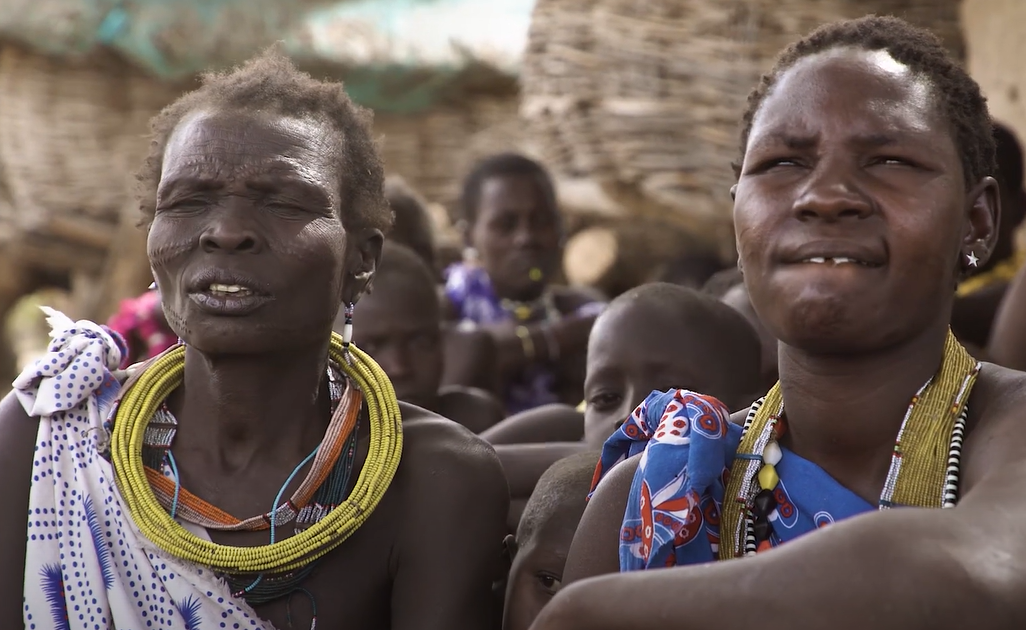 Kara-Tunga, Ateker Documentary
Kara-Tunga, Ateker Documentary
How is the tribe politically organized?
The political organization among the Toposa is not clearly defined. However, respect is paid to elders, chiefs and wise men.
Most major decisions are made in meetings that involve only the men and are held in the dark hours of the night.
They do have somewhat of a council, though.
Who is on their council?
The council is made up of the clan’s elders. They are said to have sacral power over rain and drought. Some Toposa people may go to the elders for guidance.
Women are not typically allowed on council, and are not to be involved in any decisions.
What are their beliefs?
The Toposa believe in a supreme being and in ancestral spirits who may help in times of need, such as during a drought or disease epidemic among their herds. They offer animal sacrifices to the spirits and communicate through witchdoctors.
They also have an intriguing belief about how man arrived on Earth.
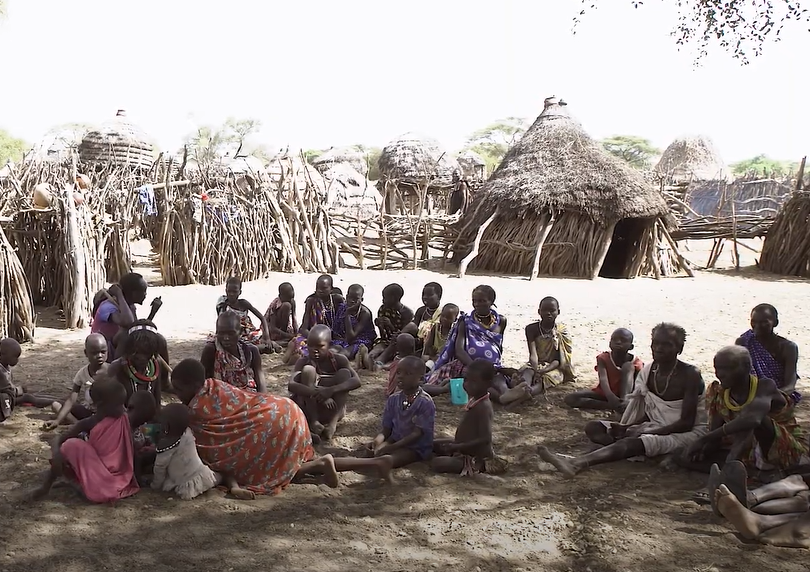 Kara-Tunga, Ateker Documentary
Kara-Tunga, Ateker Documentary
What did they believe about man’s arrival to Earth?
The Toposa people believe that men originally lived with “Nakwuge” in the sky, but many of them slid down a rope to Earth. After the last man slid down the rope, it broke, separating them from Heaven.
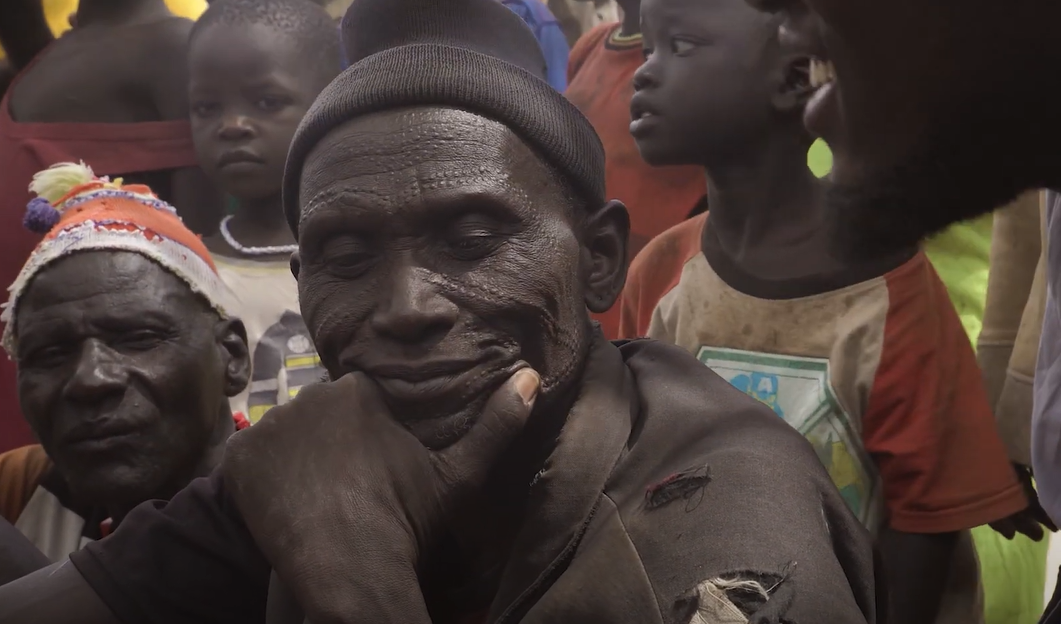 Kara-Tunga, Ateker Documentary
Kara-Tunga, Ateker Documentary
What are their cultural traditions?
Traditionally, the Toposa people cannot read. They never had a need to. They have always communicated orally, specifically songs, dance, music, poems and folklore—which have all become an important part of their culture, even today.
There is one cultural tradition though, that is certainly foreign to Western culture.
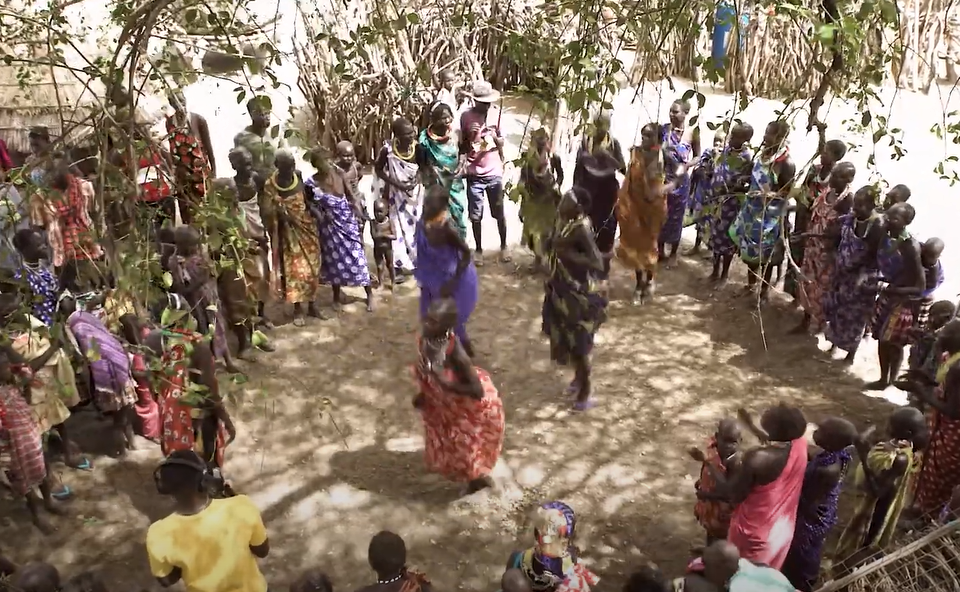 Kara-Tunga, Ateker Documentary
Kara-Tunga, Ateker Documentary
Body Scarification
The Toposa people have a cultural practice of scarification—which gives a raised, scarified design on the skin. They use stones, glass, blades, or other tools to create meaningful pictures, words or designs.
They do it on their faces, arms, upper body, backs, and even the legs. Both genders, and some even at young ages.
Why do they do this?
This tradition expresses clan identity, status within the community, passages into adulthood, or spiritual significance.
For example, a Toposa man’s right shoulder is scarred with a number of dots if he has killed any enemies in war.
What are their marriage practices?
In the Toposa community, marriages are arranged and polygyny is often practiced. This means that a young girl, sometimes as young as three, will be promised to a man—usually an elder chief with many other wives.
When the girl is just 11-years-old, she will be sent to live with the man she has been promised to—whether she wants to or not.
How is the arrangement chosen?
The Toposa people sometimes refer to it as “booking.” A man can “book a baby,” if he wants to. If he believes the mother is a good person, he may quickly “book” the baby for marriage, even before it is born, assuming that the baby will be similar to the mother. If the baby is born a boy, the marriage arrangement is immediately undone.
If a man sees that an infant or young girl is particularly “nice looking,” he will book her for marriage before another man does.
Is there a dowry?
Sort of. Rather than a dowry, it is often considered a trade. A man will usually trade about 50 to 60 cows for a young girl—which is why it is generally the older chiefs who receive the young girls.
Sometimes the cows are given before the girl is given, other times the man takes the girl and promises the family cows for a later date.
What happens after a girl is married?
Unmarried girls have the sides of their heads shaved. Once a girl is married, the central hair is shaved off and then the hair is left to grow in.
This clearly distinguishes a married girl from an unmarried girl within the community.
Are the girls treated well?
Unfortunately, in most cases, no. In traditional Toposa marriages, the girl is expected to adhere to her husband’s wishes. This includes physical touch. If a girl refuses to be intimate with her new husband, the other wives will hold her down so the husband can do what he wants to her.
What happens if a girl disobeys her new husband?
If a girl does not obey her husband, he gets physically violent with her, typically in the form of whipping.
Many young wives are also not taken for medical care when sick or hurt, and are cut off from their families. Domestic mistreatment at one point caused many young Toposa wives to die.
How many wives can a Toposa man have?
There is no limit. A Toposa man can have as many wives as he can afford (using cattle for trade). This further explains the serious desire to raid neighboring tribes for their cattle.
Toposa men can continue marrying into their old age, regardless of how young the girl is.
Are there marriage ceremonies?
In some cases, yes. A ceremony will take place with singing, dancing, and traditional food and drink and costumes. This depends on the wealth and status of the families involved.
Is this still how marriage is practiced today?
Considering there are hundreds of thousands of Toposa, and they live in various places, it is not likely that this traditional form of marriage is still the only option.
It is believed that young Toposa men and women today can sometimes choose their own spouse and even include a form of courtship beforehand. This greatly depends on where they live, and what their family practices.
Are the boys married young as well?
No. Toposa boys’ lives are organized by age. From early childhood they are taught by their fathers how to herd livestock. They’re tasked with caring for goats and sheep first, and then graduate to looking after cattle.
They are sent on journeys to look for pasture and water, and taught how to be warriors. They do not typically marry until they are much older than the girls.
What are their child rearing practices?
Toposa men like to have many children who will inherit their possessions and name. Their wives begin having children as soon as their bodies allow it, and they do not use any form of birth control.
Infants become primarily the women’s responsibility. When boys are old enough (but still very young), they shadow their fathers or elder family members.
Do the children go to school?
Traditionally, no. Children were taught basic life skills and how to contribute to their community. Very few Toposa people can read or write.
Today, there are some modern settlements that provide schooling for Toposa children.
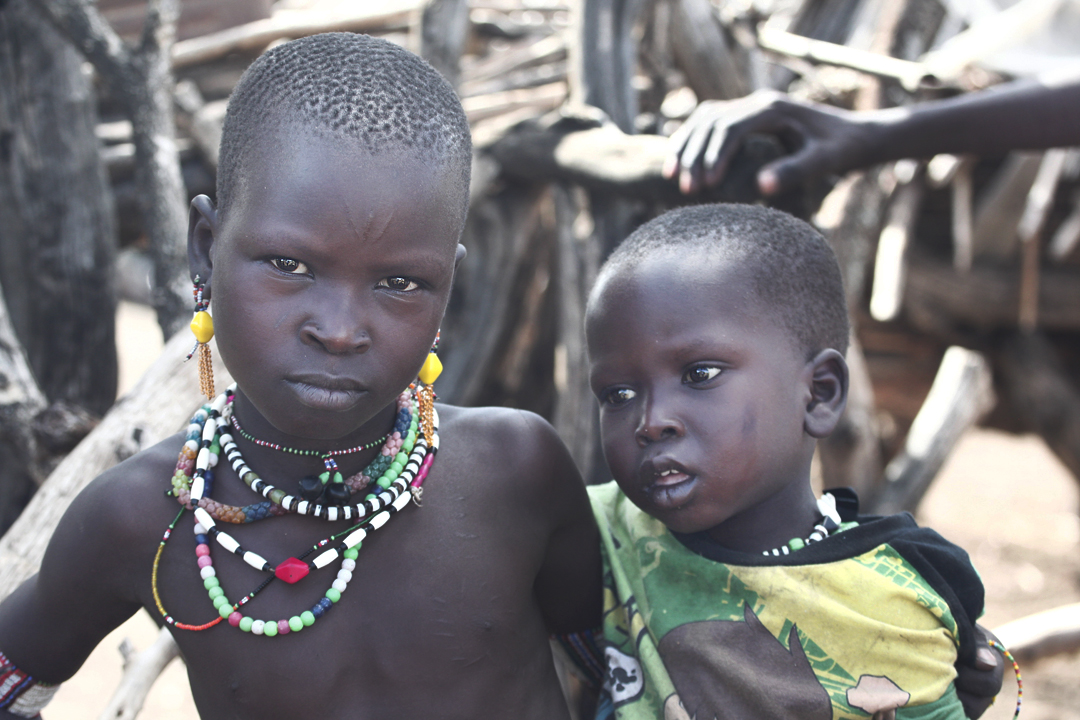 Steve Evans, CC BY 2.0, Wikimedia Commons
Steve Evans, CC BY 2.0, Wikimedia Commons
What is life like for the Toposa people today?
There are still hundreds of thousands of Toposa people who live a traditional, primitive lifestyle today, building in huts from grass and mud, making their own clothing and growing their own food.
However, they do have access to the modern world. While some choose to partake in basic trading only (acquiring some items like pots, clothing, and arms), others have relocated to settlements that now provide water wells, schooling, and healthcare.
Can we visit them?
Actually, yes. Through immersion tourism, there are some parts of South Sudan that offer guided stays within Toposa villages.
While you will certainly get a good experience, it is important to remember that those Toposa people will put on a show in exchange for goods—and while some may love it, others may feel extremely exploited.
Final Thoughts
The purpose in life for the Toposa people is to satisfy self-pleasure. They do so in the form of traditional dance, marrying multiple wives, rites of passage, child initiation, and owning livestock as a way to acquire status and fame.
While they have some access to the modern world, they continue to choose their traditional way of life—hunting, gathering, and raiding their neighbor’s cattle.
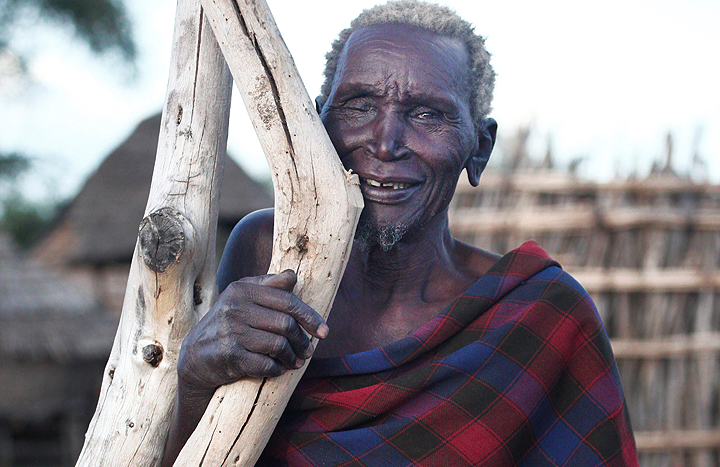 Steve Evans, CC BY 2.0, Wikimedia Commons
Steve Evans, CC BY 2.0, Wikimedia Commons

